

advantage of our online Portal, order what you want, from wherever you are. relax, we got you covered
Take

download our catalogue at highlighthorticulture.co.uk (0)1949 839 727 sales@highlighthorticulture.co.uk









An army of microbes to get more and better yield!
Bacteria increase nutrient solubility and absorption, making the plants more productive. Trichoderma fungi increase root surface, health, and effectiveness. Selected enzymes catalyze organic nutrients and increase both activity and effect of soil microorganisms.
No matter if you choose pre-fertilized, non pre-fertilized, or coco substrate, make the most of your grow by adding life in the soil!

Keep it organic! Keep it Biobizz!

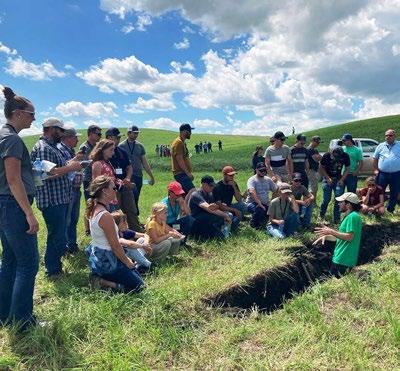


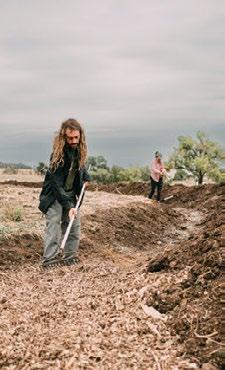

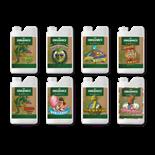


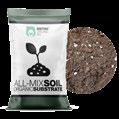








7 CONTENTS IN THIS ISSUE OF GARDEN CULTURE : 11 Foreword 13 Author Spotlight 15 Marketplace 24 Confessions Of A UK Hydro Store 26 Bat Guano - The Plant Superfood With A Bad Rap 30 No Water, No Problem! Regenerating Dry Land Without Irrigation 36 Saving The Ground Beneath Our Feet 40 Gardens Help Mitigate Urban Heat Islands 48 Ditching Social Media To Create Better Connections 50 Bio-Intensive Gardening - Growing Large While Using Less 56 Adjusting Soil pH 58 Notes From A Dirty Old Gardener - Flower Power 60 Heat Waves Are The New Normal, So How Do We Adapt? 66 Keeping Chickens - A Circular Economy For Soil Regeneration 68 Beneficial BnB: While The Plants Are Away, Let Mycelium Play 74 Summer Social UKA Sneak Peak Inside Plantasia’s Greenhouses 76 Hearing The Music Of The Forest Giants - Part 2 80 Getting In Tune: Keys To Succeed At Integrated Pest Management 83 The Squid Game - How A Waste By-Product Becomes A Regenerative Agricultural Solution 84 Growing With The DeepTurning Your Thumb From Green To Aquamarine 91 Local Growers 94 5 Cool Ways 91 LOCAL GROWERS 60 15 MARKETpLACE BIO-INTENSIVE GARDENING GROWING LARGE WHILE USING LESS 50 NO WATER, NO PROBLEM! REGENERATING DRY LAND WITHOUT IRRIGATION 30 HEAT WAVES ARE THE NEW NORMAL, SO HOW DO WE ADAPT? SAVING
GROUND BENEATH OUR FEET 36
THE
Grow Bigger Yields, Organically






And unlock peak crop performance previously thought impossible with organic inputs.




This game-changing line of organic inputs combines Mother Nature’s fertility with modern-day technology, resulting in clean, and heavy yields that outperform competitor crops in the marketplace.
What’s more, each product in the OG Organics™ suite are produced in Europe following the same formulation and organic quality standards than the products produced in our site in the USA, which are CDFA (California Department of Food and Agriculture) and OMRI (Organic Materials Review Institute) certified.





Advanced Nutrients’ innovations in organic inputs enable you to bring your crops to their TRUE genetic potential.




















FOREWORD CREDITS
Ican’t decide which type of gardening I prefer. My outdoor gardens have always been organic, whereas the indoor grows tend to be predominantly synthetic. But many articles in this edition can easily convince anyone that organic and regenerative growing is the way forward.
From some practical tips from Joanna Berg in the article Getting In Tune: Keys To Succeed At Integrated Pest Management , to Keeping ChickensA Circular Economy for Soil Regeneration by a new contributor, Marci Babineau, this edition delves into the many ways one can introduce sustainability into the garden.
We dive into the benefits the sea offers our gardens in Growing With The Deep - Turning Your Thumb from Green to Aquamarine by Xavi Kief. Our friend and writer Av Singh talks about calamari in The Squid Game - How A Waste By-Product Becomes A Regenerative Agricultural Solution.
If you are looking for inspiration, check out the Local Growers features. In each edition, we spotlight the farmers and gardeners who care about their environment, nutritious and ethically produced food, and the people they feed.
Organic growers often see their gardens and eating habits as part of a much bigger system. We do not live in a bubble, and all our life decisions come with their own set of repercussions.
Please visit GCMag.co and check out our back editions. Some information never gets old.
Happy growing,
Eric
SPECIAL THANKS TO:
Alan Creedon, Anne Gibson, Av Singh, Catherine Sherriffs, Cosmic Knot, Jennifer Cole, Joanna Berg, Marci Babineau, Martyna Krol, Philip McIntosh, Regi Oneton, Rich Hamilton, Xavi Kief, and Plantasia.
PRESIDENT
Eric Coulombe eric@gardenculturemagazine.com +1-514-233-1539

EXECUTIVE EDITOR
Celia Sayers celia@gardenculturemagazine.com +1-514-754-1539
EDITOR
Catherine Sherriffs cat@gardenculturemagazine.com
DESIGN
Job Hugenholtz job@gardenculturemagazine.com
DIGITAL & SOCIAL MARKETING social@gardenculturemagazine.com


ADVERTISING ads@gardenculturemagazine.com
PUBLISHER
325 Media INC
44 Hyde Rd., Mille-Isles QC, Canada J0R 1A0 GardenCultureMagazine.com
ISSN 2562-3540 (Print)



ISSN 2562-3559 (Online)
Garden Culture is published six times a year, both in print and online.

@GardenCulture @GardenCulture @GardenCultureMagazine @Garden_Culture
DISTRIBUTION PARTNERS
• Creation Wholesale
• One Love Inc
© 325 Media
• Highlight Horticultur e
• IKON
All rights reserved. No part of this publication may be reproduced, stored in a retrieval system or transmitted in any form or by any means, electronic, electrostatic, magnetic tape, mechanical, photocopying or otherwise, without prior permission in writing from 325 Media Inc.


11 GARDENCULTUREMAGAZINE.COM
FOREWORD & CREDITS


























BLOOMBASTIC with a “Green” twist! I N T ERNATION A L AWARD W I N N RE Turn your project into progress! Rokzbastic is the newest member to the BASTIC Family!!! A high-quality cocktail of minerals and biostimulants which is the perfect partner for achieving rokz-solid frosty results. @atami.uk
Author Spotlight
Truth be told, Martyna Krol is loveable, and we adore having her voice on our pages! Her fingers are firmly on the pulse of the grassroots gardening scene in the UK; she’s got a ton of knowledge to share and delivers it all with a super sense of humour. From experiences in her allotment and making super stinky comfrey fertiliser tea to her crafty and delicious fermentation experiments, Martyna’s content is real and relatable. Here’s a chance to learn more about our friend and contributor, Martyna.
Do you have any fun new projects on the go?
Due to the variety of my work, I have dozens of projects going at once. Recently, I decided to wind them all down and focus more on myself. I’m doing an exciting soil course and considering relocating to a sunny European country.
What has been one of your greatest garden success stories?
The gift that keeps on giving: growing living soil. In one of my hugel bed designs (in its third year), besides plants looking like they’re in a fashion show, there are now Wood Blewits growing, rare and delicious mushrooms. Building this garden and having it tested for bacteria and fungi count, I see how abundant life can be. The food growing there is terrific, the soil is rich in life, and my clients are healthy and loving it.
Do you have any significant garden failures?
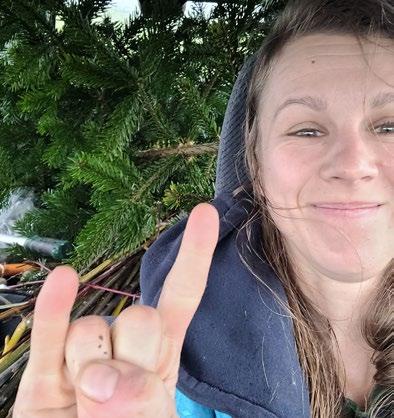
My allotment. It’s the third year I’ve been trying to landscape it for more usable space, but I never have time. It’s fantastic for wildlife, though!
Martyna Krol
What do you think is most exciting about the gardening world right now?
In the last few years, it has exploded. Several years ago, few people were interested in growing, especially food. With the combo of health and political turmoil, we now see hundreds of new growers. There are dozens of channels, influencers, gardening media companies, free info, paid courses, whatever you want. There are amazing people everywhere caring about soil and the environment, and they’re showing novice growers how to do it. It’s wonderful and hopeful for the future.
What’s your favourite thing to do during your “off” time?
Being with people (which often involves food), playing, and exploring. I’m blessed with beautiful hills here, and my life is largely outdoors, so walks and summer swims are common. 3
Are you interested in writing for Garden Culture Magazine?
We’d love to hear from you! Send us an email introducing yourself with a sample of your work. editor@gardenculturemagazine.com
“Several years ago, few people were interested in growing, especially food. With the combo of health and political turmoil, we now see hundreds of new growers”
AUTHOR SPOTLIGHT 13


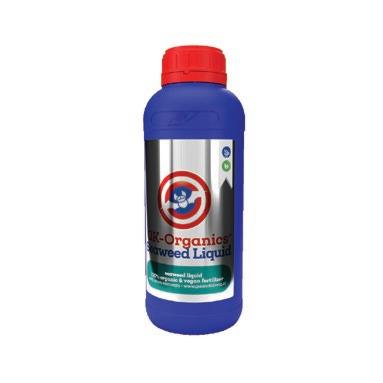



Discover the complete organic liquid range thanks to the new GK-Organics ® Florizon ! 100% organic fertilizers • www.gk-organics.nl distributed by: Check our new feed schedules:
Tray2Grow Planter
An Allotment Wherever You Grow
This durable, fully collapsible fabric planter is the perfect addition to AutoPot’s Tray2Grow if you want to cultivate root veg. Its capacity of 107.5 L allows unchecked horticultural adventurism in the home, on the patio, or in the greenhouse.
Flexibility isn’t the Tray2Grow Planter’s only advantage over in-earth cultivation. Porous planter walls promote vigorous, healthy growth as the fabric increases oxygen exchange in the root zone.

Simple to assemble and produced from BPA-free, Lead-free fabric, the Tray2Grow Planter is extensively reusable. Once your growing season is over, your Tray2Grow Planter can easily be disassembled for cleaning and/or storage.
Visit AutoPot.co.uk for more inspiration and more.
Maxibright JUNO LED PRO
The JUNO LED PRO from Maxibright is a powerful, budget-friendly LED fixture that delivers an impressive total light output of 1800 μmol/s (PPF) of uniform, full-spectrum light with additional red for improved flowering.
Foldable for easy transport and installation, the JUNO LED PRO has six bars of high-quality MaxiLED chips to provide perfect coverage over a 1.5 x 1.5m area. It also features a remote dimmer and the ability to control multiple units using the JUNO LED lighting

Introducing OG OrganicsTM by Advanced Nutrients

OG Organics’ inputs combine Mother Nature’s fertility with modern-day technology, resulting in clean, heavy yields outperforming competitor crops.
Each product in the OG Organics™ suite is produced in Europe following the exact formulation and organic quality standards as in the USA: CDFA (California Department of Food and Agriculture) and OMRI (Organic Materials Review Institute) certified.
With highly absorbable micronutrient amino acid complexes, the Advanced Nutrients OG Organics™ line rivals the mineral-based solutions with cutting-edge organic inputs.
AdvancedNutrients.com for more information.
Grow Tent
From the UK’s #1 for six consecutive years, the PRO Titan 1-HL is available in White or Mylar also comes in the standard height of 200cm (Titan 1).There are five doors, 18 port options in four sizes, a night vision window, and a 25mm powder-coated, tempered steel frame with metal push/click fittings. Double cuff vents and 20% oversized for acoustic ducting. Uplift irrigation bar for gravity-fed water and nutrient systems. Silicone pads for roof bars to reduce vibrations. Main door clips, water tray, double stitched seams and a canvas that completely unzips for easy assembly. BudBox PRO. Where the PROs grow.
Visit BudBoxGrowTents.com to find a suitable model for you.

Maxibright Varidrive 720W
The Maxibright Varidrive 720W LED is a foldable LED fixture with an impressive total output of 1870 μmol/s of full-spectrum light, delivered uniformly over a 1.5 x 1.5m area via an array of high-quality diodes. Additional red light makes this fixture perfect for flowering and the vegetative growth stage. Powered by the Maxibright Varidrive 600W variable power pack, you can dim the LED and mount your power pack directly to the LED unit or connect remotely to help regulate temperatures in your grow room.
Manufactured and distributed exclusively by Highlight Horticulture. Contact your local grow store for more details.
HY-GEN NUTRIENTS & ADDITIVES FOR SERIOUS GROWERS
HY-GEN SEA ESSENTIALS™
Flower and Resin Builder
NUTRIENTS
Formulated by its chemist and founder, HY-GEN Nutrients and Additives have been helping serious growers in Australia since 1994. Committed to producing quality products which are buffered for pH stability, HY-GEN products are easy to use and deliver consistent results.
HY-GEN offers the choice of either two-part or singlepart nutrients, tailored towards the diehard hydro and coco grower. The additives are simple to use and provide multiple functions, giving the grower value for money. HY-GEN’s online feed schedules and nutrient calculators make it easy to fine-tune results.
Check out the range at HYGEN.com.au

SEA ESSENTIALS™ is a flower and resin builder formulated using a unique blend of sea plants. Each has its own unique plant flower and resin-promoting properties. It doesn’t only increase weight and flavour; naturally bound potassium and essential micronutrients also promote terpene production.
Sea plants are known for their high amino acid and natural stimulant content. The natural compounds help to promote nutrient uptake and a healthier rhizosphere while encouraging beneficial microbes. SEA ESSENTIALS™ is low in sodium compared to other products derived from sea plants and can be used from flower to harvest. Suitable for run-to-waste systems. Visit
British Minerals Money Shot
Money Shot Oil & Yield Enhancer helps increase flower mass and plant oil production during the flowering phase.

It provides a carefully designed mix of high-quality phosphorus and potassium to the plant’s flowering sites.These are delivered in high concentrations, which helps the plant uptake nutrients quicker and make them more readily available to the plant.

• Contains a multitude of organic acids & amino acids
• Increases flower mass and oil production
• Improves taste and visual appeal
• Increases the size and weight of fruits and flowers
• Designed for use in all grow systems
• Great value Check

16
HYGEN.com.au or contact Hydrogarden to find your nearest stockist.
out GrowYourHydroponics.business for more great products for your garden.
μmol/s
The Varidri e 720W Led

The Maxibright Varidrive 720W LED is a foldable LED fixture with an impressive total output of 1870 μmol/s of full-spectrum light, delivered uniformly over a 1.5 x 1.5m area via an array of high-quality LED diodes. Additional red light makes this fixture perfect for flowering, as well as the vegetative stage of growth. Powered by the Maxibright Varidrive 600W variable power pack, giving you the option to dim the LED, as well as the ability to mount your power pack directly to the LED unit, or connect remotely to help control temperatures in your grow room.
Key FeaTures
720W power, 1870 μmol/s total light output (PPF)
6 bar LED fixture, designed for a 1.5 x 1.5m area

Additional red light for enhanced flowering
3-year warranty
High-quality diodes
Full spectrum light output for the complete grow cycle

Dimmable: 250W, 400W, 600W, 720W (Boost)
Foldable and lightweight
One-person assembly
50’000 hours lifespan
Dimensions: 1100 x 1075 x 50mm
Powered by Maxibright Varidrive variable power pack.
Connect to fixture or use remotely with 10m extension lead
(Lead sold seperately)
1870
Manufactured & distributed by
Original the
I love your products!!!

I noticed a difference right away
love this stuff!
The optic foliar line actually works! I noticed a visible difference in my plants within 2 days. I highly recommend this product.


great!!
Saw results after first use no BS. just give it a try
10X easier
Your products make my routine 10x easier being able to spray with LIGHTS ON!
It really works!
THIS SPRAY REALLY WORKS.!!!! Will buy again
No Damage No Burning No Residuals Ready To Use & Concentrate
Lights on spray.
Over 22 year experience providing guaranteed foliar spray solutions SALES@OPTICFOLIAR.COM
839 727
Also flower safe!!!
01949
Maxibright ‘MaxiLED PRO’ Propagation LEDs
‘MaxiLED PRO’ propagation LED twin packs from Maxibright offer hydroponics enthusiasts an efficient and cost-effective lighting solution for propagating plants. These high-quality grow lights emit bright and efficient light with a 6500K colour temperature, ideal for seedlings and clones.The 55cm version outputs 57 μmol/s per strip, while the 100cm version delivers even more output at 66 μmol/s per strip. IP65 rated for durability and resistance to dust and water and is more energyefficient when compared to traditional lighting. Multiple units can be daisy-chained with up to 50 strips using only one power source, making them perfect for larger setups.
Invest in MaxiLED propagation LEDs for healthy and strong plant development, backed by a 2-year guarantee.
Tent-X (TCS-1) Control System


A state-of-the-art control system, the brand-new Tent-X from Trolmaster offers users complete control of their growing environment using one single controller. Some examples of the equipment Tent-X can control include EC Fans (intake & extraction), Lights, CO2, Humidifiers, Dehumidifiers, Air-Con, Heaters, Pumps and much more. It’s now possible to monitor and control your room from anywhere worldwide using Tent-X and the new TM+ app available for iPhone and Android. Tent-X can finally unite all your climate control and irrigation devices into one platform, allowing your devices to work together to create the optimal growth environment for your plants.
Go To GrowYourHydroponics.business to learn more.
LUMii BLACK Blade 400w LED

A cool-running, efficient plate-format LED grow lighting fixture. With a full, balanced spectrum 3500K white light and 660nm red light from 64 Osram chips and PPF 1040μmol/s, the LUMii BLACK Blade 400w LED is ideal for the whole plant life cycle.
The 2-panel, adjustable design allows a closed arrangement of 50.5cm x 61cm, or an open arrangement of 50.5cm x 74cm, with a 15cm central gap.The fixture allows the attachment of a LUMii Black Bar 30w UV/FR LED between the plates to provide UV and Far-Red light if required. The manually dimmable integral driver is controllable externally, and an array of fixtures may be linked to the same controller via the RJ12 connector or jack plug. CE/UKCA compliant.

Visit Grow-LUMii.com to find a stockist near you.

Manufactured and distributed exclusively by Highlight Horticulture. Contact your local grow store for more details.
British Organic Bio
All Natural Premium Peat Mix Substrate
All-Mix is a premium mixture of the finest types of peat, combining white and black to create the perfect blend for growing organically. Pre-fertilised and activated using organic materials to last between 4-7 weeks of growth, All-Mix is ready to take your grow to the next level. British Organic Bio also contains Trichoderma, a genus of fungi that aids the plant as a bio-fertiliser and works as effective biocontrol against various pathogens.
Available from IKON international or in a store near you.
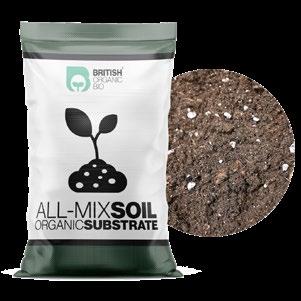
19
Packs Protect “Clean Hands”
Premium machine washable gloves are available in S/M and L/XL, with a seamless knitted lining and knitted cuff for a snug fit. The breathable fabric keeps your hands dry and comfortable by preventing sweating. Close-fitting design and superior grip make them an ideal choice for trimming and handling tasks of all descriptions in the garden, inside and out! The rubberised layer also helps if you are moving bags of media that can be slippery.
Distributed by @creationwholesale in the UK. Check out PacksProtect.com

CalMag Pro T.A. Seaweed


A shortage of calcium and magnesium (Ca/Mg) is a common problem
A powerful, 100% natural pre-flowering and flowering
“Ascophyllum nodosum” seaweed promotes strong root and foliage growth, resulting in a denser
As a foliar application, Seaweed stimulates bud development, and its appre-flowering phases reduces internode
UGro
UGro COCO Pot is a range of grow bags designed for intensive outdoor or indoor cultivation. These flexible bag-pots contain a brick of dehydrated high-quality coconut substrate.
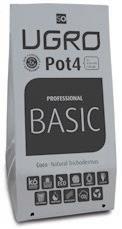
Visit UGroCOCO.com for the whole range.
UGro BENEFITS is a product line containing beneficial microorganisms for soil health, enriching the microbiome. Rhiza1200 is composed of a powerful component (Rhizophagus irregularis) with a high concentration of spores (1200 cfu/g), allowing for greater effectiveness and propagation. BACKmagic is a stabilised biological system of the genus Bacillus, producing a variety of enzymes and other active ingredients.

Learn more about the entire line: UGroBenefits.com

20







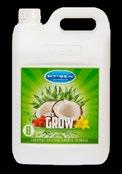


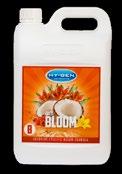
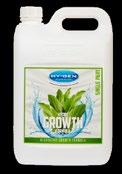


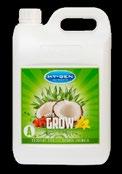
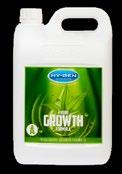


































FOR SERIOUS GROWERS www.hygen.com.au SOCIAL MEDIA LOGOS P ACK SOCIAL MEDIA LOGOS P ACK
Experience the Beauty of Bacteria
Biobizz Microbes Powder
Biobizz Microbes Powder is packed with powerful bacteria, a super-concentrated formula of beneficial microorganisms, creating the ideal ecosystem for your soil.

Trichoderma is the key to creating a natural defence system against harmful fungi, protecting your plants from invaders that can hinder growth and productivity.
Microbes Powder takes catalysation to another level, creating free amino acids in the growing me dium and increasing the activity and effectiveness of the active microorganisms. Combining powerful elements in an easy-to-use powder format guaran tees more productivity and a healthier yield.

Invest in the health of your plants today with Mi crobes Powder by Biobizz!
Go to Biobizz.com to learn more.
The Maxibright DAYLIGHT 480W LED PRO has been upgraded and now has a total output (PPF) of 1334 μmol/s, offering growers even more high-end quality, full-spectrum light at the same affordable price.
480W PRO fits perfectly into a 1.2 x 1.2m grow tent (or growing area), allowing you to achieve ideal light coverage even in ‘smaller’ locations.
features five LED clip-on bars packed with all the features of our PRO range of LEDs, including easy clip-on bars, lightweight and slimline design and remote dimmer, all wrapped up with a price point that makes them extremely appealing. The switch to LEDs couldn’t be any more tempting!
Manufactured and distributed exclusively by Highlight Horticulture. Visit GrowWithDaylight.co.uk


22









































imitated, never equalled canna-uk.com/boost
Often
Confessions of a UK Hydro Store Confessions of a UK Hydro Store

It’s Plantasia’s turn to confess ! Known across the UK for breeding, growing, and selling chillies of all spice levels, Plantasia is also a well-stocked grow shop ready to help gardeners through all phases of their growing ventures. While this incredible group has been busy planning the upcoming Summer Social (see page 74), they’ve taken the time to reflect on the industry’s highs and lows.
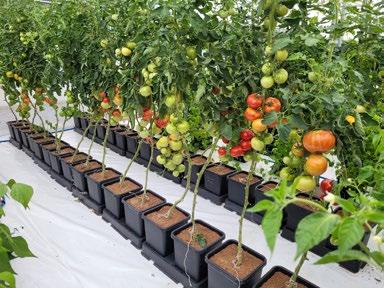

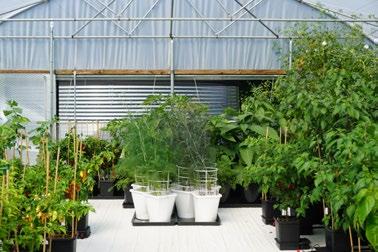
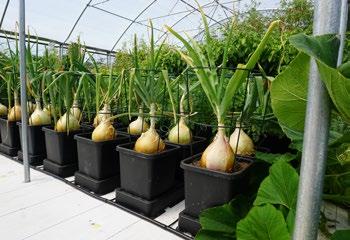
#gardenculturemagazine #confessionsofaukhydrostore #gardenculturemagazine #confessionsofaukhydrostore
24
PHOTOS: PLANTASIA, MARTYNA KROL
You have quite a unique business. How would you describe the shop and gardens?
Plantasia is set on an 8-acre site and is home to our shop and greenhouses. We use the rest of the land for other activities. The greenhouses are used for protected crop production, such as chillies, tomatoes, peppers, and aubergines, amongst many others.
What has been the most challenging thing about running your business?
Cash flow and lack of free time, but that’s probably the same for most small business owners.
What would you have done differently?
Looking back, I would have diversified sooner, but sometimes you must wait for the right opportunities to present themselves.
What’s your top tip for a newbie gardener starting an indoor grow room?
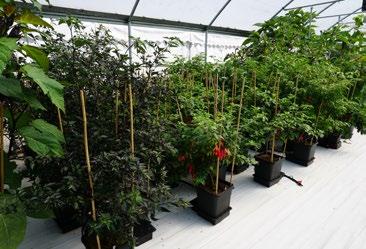
Talk to your local grow store and get their advice instead of online research, forums and YouTube. They will give you the best advice, built from the experience of hundreds of other customers, which will ultimately give you the best success and save you money in the long term.
Known across the UK for breeding, growing, and selling chillies of all spice levels, Plantasia is also a well-stocked grow shop ready to help gardeners through all phases of their growing ventures
Has the recent market slump caused you much pain?
Yes, but we have managed to continue through a diversified income stream.
What is the most significant change you have noticed in the past ten years?
I don’t think there is one thing, but probably the most prominent is moving from hydroponic systems to pot-based culture.
What is the most commonly asked question at the shop?

Can you do it any cheaper?
Do you have any favourite products? If so, why? The AutoPot watering system – it’s our system of choice in the greenhouse.
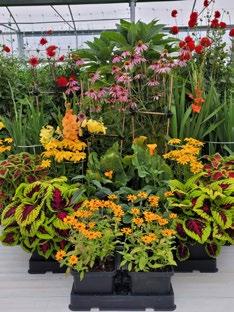
How do you keep customers coming back to you?

Expert advice, understanding the customer and their needs, and honest service with no unnecessary upsell.
What did you want to be when you were 10?
10? I don’t think many 10-year-olds have career aspirations – heck, not many 25-yearolds do, either. But when the time came at secondary school to take lesson options (13), I knew I wanted a career in electronic engineering, which is what I went on to do before starting Plantasia. 3
Figure 1
Want to be the next Hydro Store to ‘confess’? Take a picture of this edition of Garden Culture Magazine in your shop, post to Instagram and tag @gardenculturemagazine. OR Send your info to social@gardenculturemagazine.com 25 UK HYDRO STORE
Bat guano is an organic plant superfood that encourages prolific garden growth
The Plant Superfood with a Bad Rap
Bat Guano
Bat Guano

The Basics: What is Guano?
Bats live in large colonies, sharing the same cave from generation to generation. As a result, masses of excrement build up within the bat roost cave, eventually breaking down into rich compost. The result is a substance we call guano.
Bat guano is an organic plant superfood that encourages prolific garden growth. Guano is an excellent supplement to any organic grow, indoors or out.

BY RICH HAMILTON 26
The History of Guano
Guano has a history as one of the most precious fertilisers in the world. It has been a respected fertiliser used by the Incas and older South American cultures for centuries. It was so vital that Incan rulers split the guano-bearing islands among the provinces.
In the early to mid-1800s, guano caused a stir in European and new-American farmers. A horticultural boom caused worry that the soil might be drained of nutrients irreparably until farmers saw guano’s benefits. From 1840 onwards, Britain imported upwards of two million tonnes of guano, and the administration of the United States made it a case of agricultural need.
“Guano has become so desirable to agricultural interests in the US that the Government must employ all means properly in its power to cause it to be imported into the country at a reasonable price” – US President Millard Fillmore 1850-1853
Guano was so precious to crop development that huge battles were fought over guano mines for centuries. In the 19th century, guano caused mass hysteria similar to the California gold rush. Over 40 years, Peru shipped over 20 million tonnes of guano worldwide, making over $2 billion in profit.
How Does Species Affect Guano?
The diet of various bat species can change the nutrient profile of the guano. For example, bats that eat insects produce guano with a higher nitrogen content, creating an excellent fertiliser for the vegetative stage. In contrast, fruit-eating bat varieties have guano with a higher phosphorus content, which is more valuable during the flowering stage.
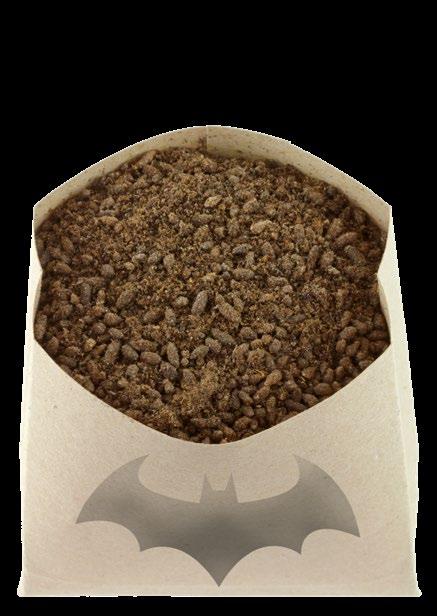
What About Sustainability?
Bat guano mining can affect the biodiversity of the bat’s roost cave environment. Naturally, the guano sustains many cave-dwelling invertebrate species, which depend on it for survival. However, the most consequential damage is to the bat colonies themselves. Bats are very susceptible to any disturbance of their roosts. Analysis has indicated that bat guano mining is linked to the loss of specific bat species and associated invertebrates and fungi. Therefore, collecting guano in some regions is outlawed.
Unfortunately, this can sometimes lead to illegal harvesting in challenging circumstances. People will collect from remote spots, sometimes in dangerous landscapes. Miners also face health risks of repetitive exposure to bat faeces without adequate safety equipment, which can cause severe respiratory problems.
Some have turned their backs on guano based on these sustainability and exploitation issues. However, some reputable companies offer organic guano fertiliser with ethics and sustainability in mind. In areas where harvesting is legal, guano collection is often government-controlled and monitored to ensure the ecosystem is not disturbed. Miners safely scoop the guano up without destroying the caves and the habitat of the bats.
The Nutritional Value of Guano
Guano is rich in nitrogen, phosphorus, and potassium (NPK), which are essential for plant growth. It also contains several micronutrients, including boron (B), calcium (Ca), iron (Fe), manganese (Mn), sulphur (S), zinc (Zn), and magnesium (Mg).
The Many Benefits of Guano
Guano works well in both indoor and outdoor grows. It improves soil texture by binding the soil and increasing water retention if it is too loose. In contrast, it can also loosen the earth and allow water to penetrate if it is too dense.
Guano is great for bioremediation; it helps flush toxins from the soil while protecting the roots and feeding the plant. In addition, it encourages the breakdown of other organic materials as a slowrelease fertiliser, delivering nutrients to the garden long-term and adding beneficial enzymes and microflora for continued soil health. Bat guano contains varying levels of NPK. Combine them with other organic products to create individual macronutrient ratios.
Guano acts as a pH adjuster, buffering the pH of the root system and helping to control nematodes. In addition, it acts as a natural fungicide against chitin from insect shells and as a soil conditioner. Combine it with other organic additions, like worm castings and bone meal, to build prosperous colonies of root fauna. Finally, it offers fungal protection when used as a diluted foliar spray.
2727
BAT GUANO
bats that eat insects produce guano with a higher nitrogen content, creating an excellent fertiliser for the vegetative stage
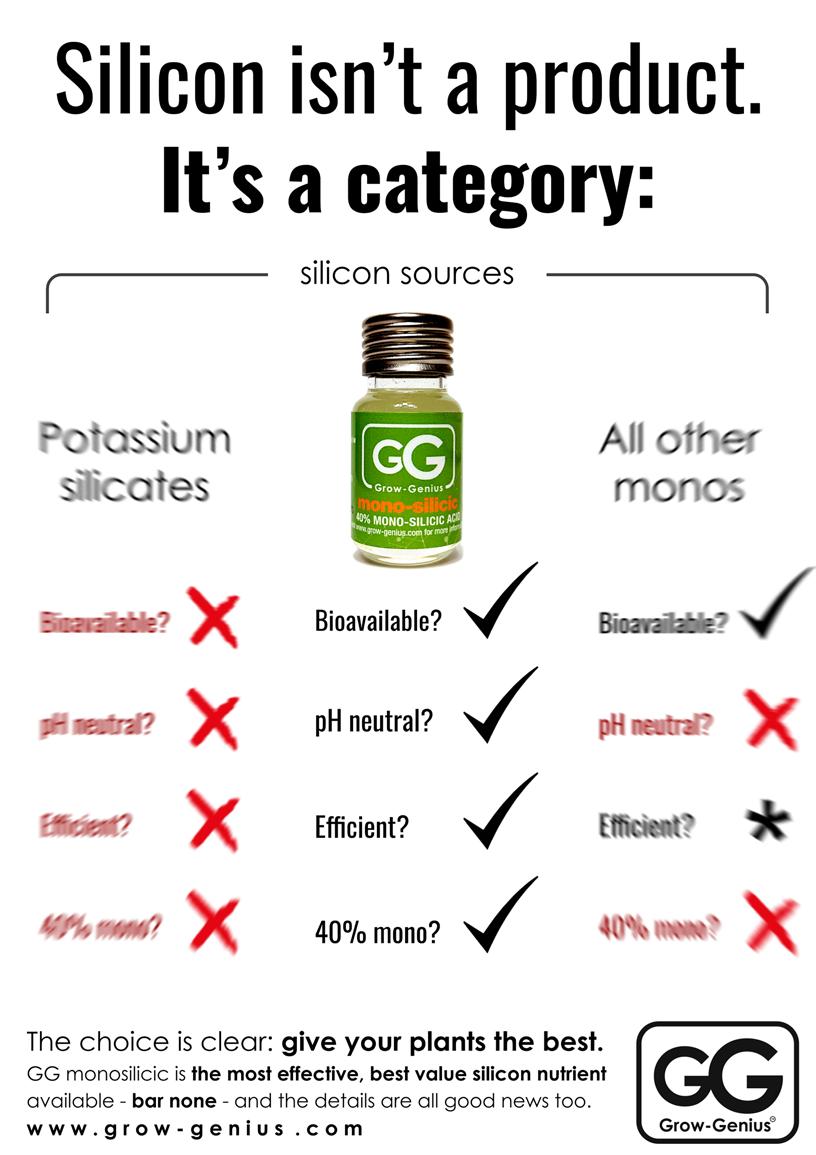
How To Use Bat Guano
Guano is the perfect foundation for any soil recipe; it will not burn your plants, and the crops you grow will be more flavourful and invulnerable to disease.
Water guano straight into your grow media. Use one tablespoon of guano per litre of warm (not hot) water. Stir together and leave to rest overnight, then apply to the garden once a week.
You can also add guano directly as a soil amendment to boost plant performance. Dig it into the earth and water well to activate it. If you sprinkle it on the surface, it will dry out, clump up, and be ineffective.
To make a nutritionally rich compost tea:
1. Add one teaspoon of blackstrap molasses, five tablespoons of bat guano and 65g of fully finished compost to a 5-litre bucket of non-chlorinated water, complete with an air stone.
2. Stir thoroughly and leave to aerate for 48 hours so aerobic beneficial microbes can populate the sugars of this nutrientrich solution.
3. Dilute 1 part compost tea to 10 parts water and apply a foliar spray or soil drench.
As bat guano is a rich and natural organic matter, the microbes in the soil must break it down into a soluble form for the plant roots to take up. This process typically takes around two weeks, so you shouldn’t expect to see results instantly.


Bat Guano - The Dangers
While bat guano is a true wonder regarding soil and plant health, you should be mindful that bats carry infectious diseases. In the current post-COVID environment, people are more cautious than ever.
Bat guano can damage your lungs and cause diseases like histoplasmosis. Symptoms include fever, cough, and fatigue. Many people get better without medication. However, those with weakened immune systems can experience a more severe infection.
Working with bat droppings requires the use of a HEPA filter mask. Attempting to work in an area where bat droppings are present may release spores into the air. Without the proper protection, this could lead to severe health consequences. Also, wearing a mask when handling or mixing bat guano into water is essential. Always clean surfaces and equipment after use and wash your hands.
Finally, leaving bat guano preparations to sit will cause harmful bacteria to develop, so use it immediately. Temperature can also have a negative effect, so keep your powdered product out of sunlight and off cold floors. Of course, you should also keep guano out of the reach of children.
Final Word
Bat guano is an excellent organic fertiliser that has been used for thousands of years, so if you want to see great results from your plants, you should try it! 3
29
BAT GUANO
Guano is great for bioremediation; it helps flush toxins from the soil while protecting the roots and feeding the plant
BIO An industry veteran with over 20 years of experience in a variety of roles, Rich is currently a business development manager for a large UK hydroponics distributor. The author of the Growers Guide book series, Rich also writes on all aspects of indoor gardening. He is also an independent industry consultant, working closely with hydroponic businesses worldwide.
No Water, No Water,
Regenerating Dry Land Without Irrigation No Problem! No Problem!


30 BY
CATHERINE SHERRIFFS
With the climate crisis on minds around the world, many have turned to water conservation techniques in the garden. Of course, any effort to save a precious natural resource is valid, from xeriscaping to collecting rainwater. But how do you grow if there’s no potential for irrigation? For many, the mere idea of no water is enough to send them running. But not for the team at Drylands Agroecology Research (DAR). Based in Colorado, the organisation is up for the environmental challenge, transforming dry, marginalised landscapes into lush ecosystems – without water.
Spearheaded by Nick DiDomenico and Marissa Pulaski, DAR designs and implements natural infrastructure to create pathways and catchment systems for water from existing precipitation. In a climate that only gets about 16 inches of rainfall a year, that’s a tall order, but DAR is proving that achieving lively landscapes in semiarid conditions is possible, one farm at a time.
Elk Run Farm
DAR designs and implements natural infrastructure to create pathways and catchment systems for water from existing precipitation
It all started in 2015 when DAR began managing Elk Run Farm, a 15-acre parcel of degraded land in the Colorado foothills. A former cattle ranch, the sloped property was extremely dry and had little vegetation thanks to years of overgrazing. Refusing to accept that the land was useless, DiDomenico got to work, following permaculture principles to regenerate the fields. Pigs, chickens, and sheep helped build topsoil and bring new life to the pastures while an exotic forest garden was planted. Largescale earthworks called contour swales were built to manage the water flow on the property. The swales are ideal for hillsides, catching and retaining every drop of water and resulting in moist pockets perfect for planting trees.
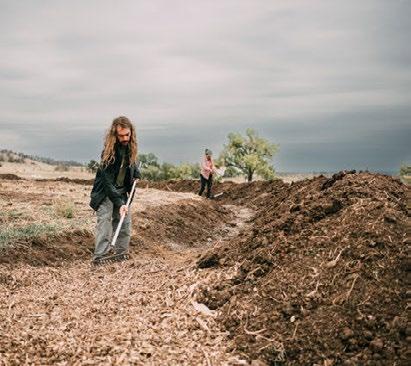

“People thought they were nuts,” explains Amy Scanes-Wolfe, Community Outreach Director at DAR. “They knew they’d only be able to irrigate [the trees] once, which is the day they were planted, and then there would never be water again.”

Despite widespread doubts, DAR set about planting over 1,000 trees, including apple and pear trees, mulberries, plums, and nurse plants to help fix nitrogen in the soil. The trees were planted about a foot and a half apart, assuming most would die. But that didn’t happen. Several years later, DAR is tracking a 79% survival rate on the trees, an incredible victory and proof that the contour swales are collecting enough water to sustain an ecosystem. Meanwhile, the new microclimate helps cool things down.
Today, Elk Run Farm is far from what it once was, a green oasis bursting with fertility and wildlife. As the pilot research project, DAR continues to collect data from the farm as it refines its selection of perennial crops, grain crops, and forest garden
systems. But while it takes time for natural systems to establish, the beauty is that once they do, most of the hard work is over.
“We put a lot of effort into getting that system going, and then if we do nothing at all, it will keep regenerating,” explains Scanes-Wolfe. “So, as those trees grow, they create this cooler, moister microclimate and habitat, and birds are coming in and pooping seeds. Between those swales, we practise regenerative grazing with either cattle or sheep.”
Seeing is believing, and after witnessing the wild transformation at Elk Run Farm, other farms are knocking on DAR’s door, looking for help in their land regeneration and growing ventures.
Yellow Barn Farm
Last fall, DAR broke ground at Yellow Barn Farm, a former large-scale equestrian centre in Longmont, CO, that was once home to over 50 horses. Windy and exposed, the property spans 60 acres, 50 of which have no potential for irrigation. The farm had fallen victim to a monoculture system and over and under grazing, and in 2020, the devastating Calwood Fire swept through the area, scorching the surrounding land.
3131
REGENERATING WITHOUT IRRIGATION
Largescale earthworks called contour swales were built to manage the water flow on the property.
Before....


The swales are ideal for hillsides, catching and retaining every drop of water and resulting in moist pockets perfect for planting trees


Swale digging
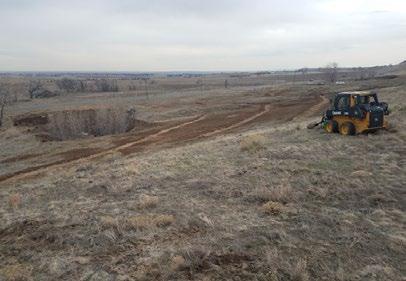
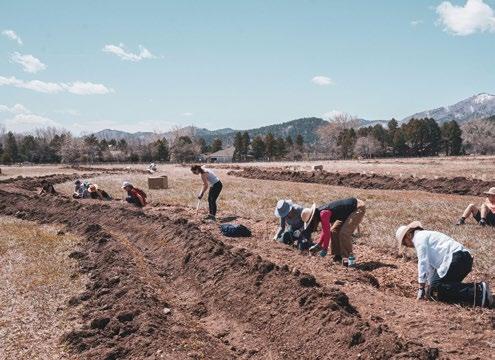
Today, Elk Run Farm is far from what it once was, a green oasis bursting with fertility and wildlife.
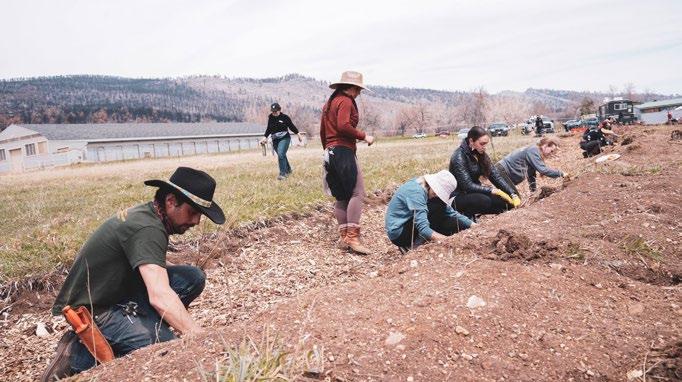

32
The owners of Yellow Barn want to regenerate the farm and grow high-quality food on a small scale, eventually setting up a CSA. The property also serves as a community hub for sustainability education; anyone interested in land rejuvenation and carbon sequestration is welcome to come and witness DAR and other environmental organisations work their magic.
“We are trying to create a new type of ecosystem,” says ScanesWolfe. “It’s not native, but it feeds people and has all the benefits of a wild ecosystem, like habitat and carbon.”
With the help of a $100K grant from the Woodard & Curran Foundation, DAR has created 17 contour swales across the 50 acres. Cattle move between the swales following rotational grazing, and this spring, 6,000 fruit and nurse trees are being planted where the water has accumulated over the winter. While the swales are always filled with mulch and compost for water retention and to help build fertility, this time, DAR has experimented by layering oyster mushroom mycelium into twothirds of the trenches. The team will monitor how this impacts tree health, but initial research suggests the mycelium will boost moisture retention by about two or three times.
“It’s fascinating to see! It’s already completely colonised,” says Scanes-Wolfe. “We were walking around seeding one of the berms the other day, and there was this web of white mycelium across the top of the mulch. If lucky, we might even get mushrooms out of the system!”
Escaping the destructive ways of monoculture, DAR is diversifying the grasslands and using three different seed mixes, including native grasses, wildflowers, and traditional forage grasses for cattle.
“We hope that whatever we seed there will make its way into the pasture below, so this is our chance to put some diversity in the seed bank so that as the cattle come through, it germinates,” explains Scanes-Wolfe.
The Solution
Volunteers and corporate groups are helping with this spring’s tree planting, and for DAR, this is where the fun truly begins. With agriculture being a massive driver of the current climate crisis, planting trees and building soil is primarily believed to be the solution. While the trees may not go into the world’s greatest soil, they will help build it over time. They’ll also be removing CO2 from the air, and a grant from Boulder county will help DAR quantify the carbon being sequestered in the system at Yellow Barn Farm.
Ultimately, DAR strives to avoid the band-aid solutions we often see regarding environmental repair. For example, rather than focusing on reducing how much water we use, DAR views its mission more as developing the landscape’s capacity to hold water so that when it does rain or snow, the moisture stays in the ground.


People beyond Yellow Barn Farm are taking notice. DAR receives interest worldwide, including from a farmer in Kenya who recently reached out for advice on regenerating dry farmland. ScanesWolfe says the current project at Yellow Barn Farm is helping DAR develop a training system so the organisation can consult on other projects and educate on how to read landscapes and understand how to regenerate them so they can thrive.
“We are designing systems that sequester carbon but also support biodiversity, restore hydrological cycles, and feed humans,” she says. “[The goal] is to create something that actually solves a lot of problems and gets to the root of what’s going on.”
As the world copes with more environmental disasters such as wildfires, drought, and erratic weather patterns, DAR is a beacon of hope, restoring, repairing, and regenerating dry and degraded land in Colorado using natural systems. Nobody said it would be easy, but someone’s got to do it. And DAR is happy to lead the way. 3
Catherine is a Canadian award-winning journalist who worked as a reporter and news anchor in Montreal’s radio and television scene for 10 years. A graduate of Concordia University, she left the hustle and bustle of the business after starting a family. Now, she’s the editor and a writer for Garden Culture Magazine while also enjoying being a mom to her three young kids. Her interests include great food, gardening, fitness, animals, and anything outdoors.
3333
REGENERATING WITHOUT IRRIGATION
Bio
“We are designing systems that sequester carbon but also support biodiversity, restore hydrological cycles, and feed humans”
up-to-date with our Garden Culture Blog
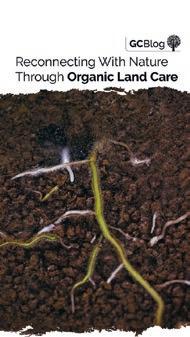
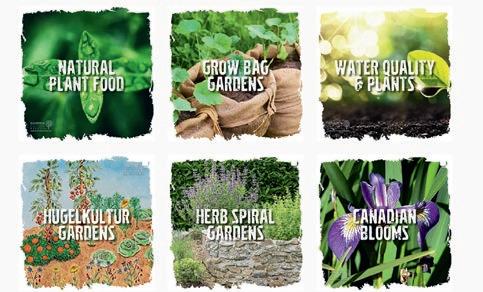


Our blog is where we bring you more than we can cover in our print issues; timely news, growing tips, and great ideas. Hundreds of growing articles are waiting for you.
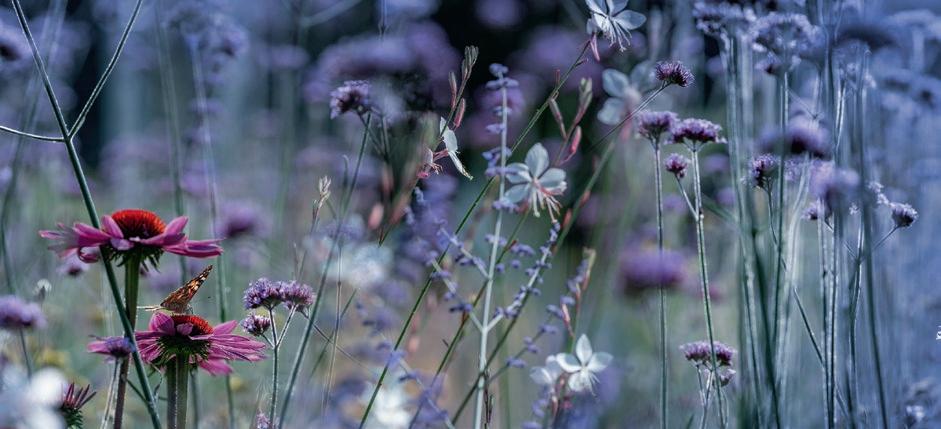
Stay
@gardenculturemagazine Stay
GCMAG.co
up-to-date with our Garden Culture Blog

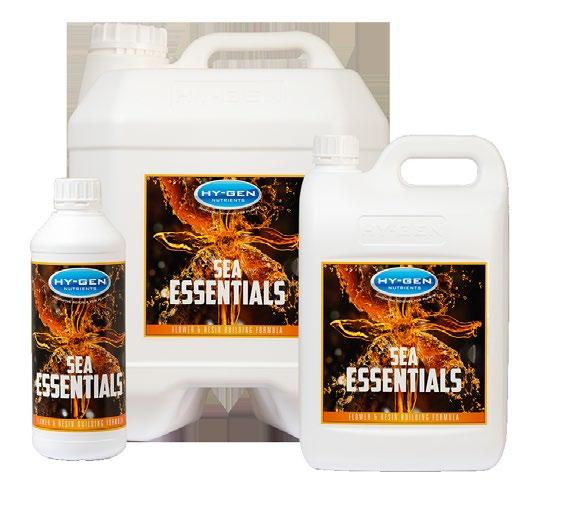
























FLOWER & RESIN BUILDING FORMULA • OIL & TERPENE PRODUCTION SUCCESS • INCREASED ROOT BIOMASS & RHIZOSPHERE HEALTH • BENEFICIAL ORGANIC VITAMINS & MINERALS GET THE GOOD OIL! Increase Flower Bulk & Density www.hygen.com.au SOCIAL MEDIA LOGOS P ACK SOCIAL MEDIA LOGOS P ACK Distributed by:
Saving the ground beneath our
feet
Promoting the world’s most underrated ecosystem, Régénération
Canada creates awareness about the power of living soil.
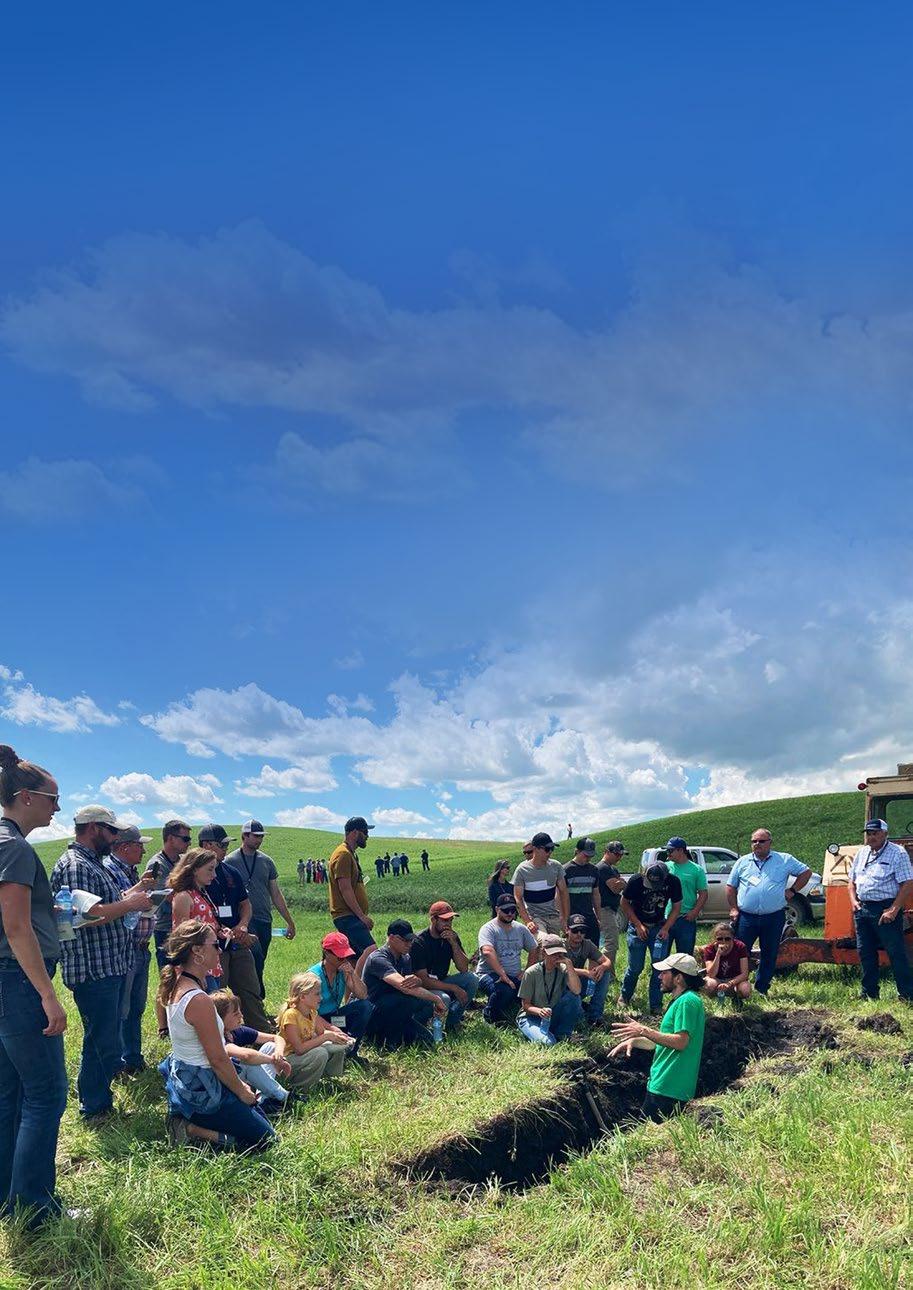
BY JENNIFER COLE
36
In 2016, Gabrielle Bastien was a student at Harvard University. The idea that soil was the answer to climate change was only beginning to spread throughout the United States. Bastien wondered if something so simple could actually be the solution the world needed.
Everything in nature connects to create harmony. For example, during photosynthesis, plants take in carbon and breathe out oxygen. The carbon is converted into food for tiny organisms living below ground. The carbon and other greenhouse gases they’ve sequestered, such as nitrogen, are released back into the atmosphere when they die. The cycle continues, nourishing the plants that feed us and the vegetation that makes Planet Earth green and lush.
The use of industrial pesticides and fertilisers, land development, and natural erosion have depleted the life in the soil. These facts, combined with an ever-growing accumulation of human-caused carbon in the atmosphere, have become too much for the soil to continue sequestering.
While at Harvard, Bastien learned that if we help soil retain its absorption abilities, we can mitigate the effects of climate change. Completing her studies and returning to her home province of Quebec, she got to work spreading the word.
Living Soil
Traditionally, agricultural soils have been one of the planet’s largest carbon reserves, sequestering more than 10% of anthropogenic emissions [1]. Soil thrives in a regenerative system that includes the following techniques:
• No-till before and after planting
• Using natural compost, such as animal manures and plants
• Eliminating chemical fertilisers and pesticides
• Protecting the soil from erosion with cover crops or winter tarps
• Planting a wide diversity of vegetation to add nutrients back into the soil.
Bastien’s plan was simple; to tell people about this concept. So she contacted networks in the United States and Europe and invited growers, producers, academics, and individuals to share soil knowledge at the newly created Living Soil Symposium. When 400 people arrived, Bastien’s dream suddenly became bigger and much more achievable. Ananada Fitzsimmons, an environmentalist and current president of the Board of Directors for Regeneration Canada, was one of the many guests in attendance.
“It was a life-changing event,” she says. “People finally began to understand the importance of soil to the well-being of the entire planet and the food chain.”
This event was the jumpstart to what eventually became Régénération Canada, a non-profit, member-driven organisation dedicated to soil health [2]

Impact
Since its conception, Régénération Canada has had a significant impact. In 2021, the organisation received the Clean50 Top Project Award for the Living Soil Symposium. This accolade recognises projects and incentives for their innovation and ability to inform and inspire Canadians.
Régénération Canada still offers workshops and seminars promoting soil health and regenerative land management that cools the planet. However, today, they are not just talking about it. Régénération Canada volunteers and experts are out in the field, working shoulder-to-shoulder with farmers and growers on the practical implications of regenerative growing. Fitzsimmons acknowledges that they are expanding and growing but aren’t a big organisation.
“We are small, so to leverage awareness and support, we build relationships and connections,” she explains.
These connections are impressive. Thirty-two Quebec dairy farms have joined the Régénération Dairy Farm Pilot Group. Working with big-name stakeholders such as General Mills, they will gradually adopt regenerative land use practices to amplify soil to its potential.
37 LIVING SOIL
“It was a life-changing event,” she says. “People finally began to understand the importance of soil to the well-being of the entire planet and the food chain.”
Ananda Fitzsimmons >
It will ultimately be the consumer that drives the regenerative movement

Mapping The Future
Régénération Canada is making massive strides in closing the gap between farmer and consumer, and that is the real game-changer.
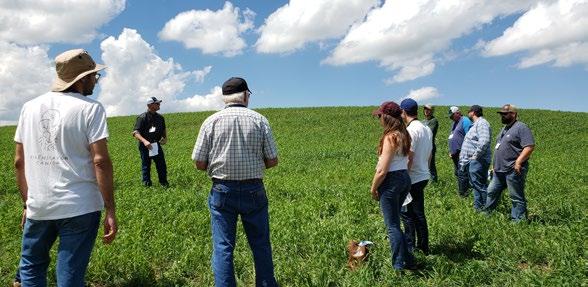
Organic products, for example, are certified, labelled, and easily recognisable. But as Fitzsimmons points out, there is a difference between organic and regenerative. Organically grown produce, for example, promotes ecological balance and biodiversity, but the system does not endeavour to rebuild or regenerate the soil [3]
It will ultimately be the consumer that drives the regenerative movement. The more in-demand regenerative products are, the more inspired farmers will be to grow them. But until there is widespread certification or labelling, it’s challenging for consumers to know where to find products grown with the health of the soil in mind.
By checking the Régénération Canada map (right), consumers can find products sold at the farm gate, farmer’s markets, or through CSA subscription boxes. Growers connect with growers and share tips and tricks on what has worked for them. Accessible to anyone who lands on the Régénération Canada website, from the Yukon in Canada’s north to Newfoundland in the east, the map paints a picture of a growing movement of soil regeneration across Canada.
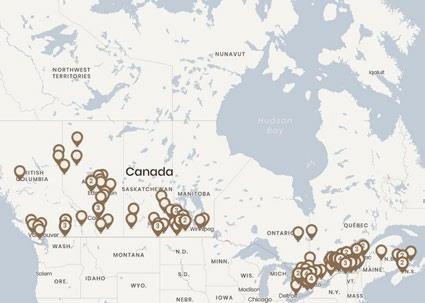
Fitzsimmons says farmers are sometimes suspicious of anything new and its effect on their bottom line.
“The irony is that it costs less to produce a crop using regenerative methods than conventional ones using fertilisers and pesticides,” she says.
Now it’s just a matter of helping growers understand and implement these techniques.
Bastien’s dream was to share knowledge, make connections and restore the soil’s ability to draw down carbon. Why? Because she knows that the living ecosystem beneath our feet is what will save the world. 3
Footnotes:
1. Soil Carbon Sequestration | FAO SOILS PORTAL | Food and Agriculture Organization of the United Nations
2. Home - Régénération Canada (regenerationcanada.org)
3. What Is the Difference Between Organic and Regenerative Agriculture? (noble.org)
BIO Jennifer Cole is a writer and garden enthusiast with a bachelor’s degree focused on history from Simon Fraser University, and a freelance writing career spanning two and half decades, Jennifer lives in Vancouver British Columbia. Her by-lines have regularly appeared in the opinion section of the Toronto Star and her portfolio includes articles in various newspapers, magazines, and websites across Canada. When not writing her own blog or visiting local garden centres, you can find her puttering, planting, and nourishing her own urban garden oasis.
3939
LIVING SOIL
Organically grown produce, for example, promotes ecological balance and biodiversity, but the system does not endeavour to rebuild or regenerate the soil
Régénération Canada map
Everything in nature connects to create harmony
Gardens Heat Can Help Mitigate Urban Islands




BY ANNE GIBSON 40
An urban verge garden
Vertical garden with terracotta pots
One challenge of city living in Australia is that 90% of our population resides in urban areas and is particularly vulnerable to the urban heat island (UHI) effect. Some of the most impacted people are the elderly, disabled and those living in highdensity housing in poorer communities.
A 2021 report, Temperature Check: Greening Australia’s Warming Cities (1), commissioned by the Australian Conservation Foundation, explains that “in built-up cities, a lack of vegetation creates ‘heat islands’ or pockets of warmer temperature, caused by air becoming trapped between buildings and other infrastructure. Dark materials, including asphalt and steel, also absorb and retain more heat than natural materials.”
Key findings from this report revealed increasing vegetation helps:
• Tackle rising temperatures.
• Enhances mental and physical health by interacting with green spaces and nature.
• Captures carbon emissions.
• ‘Reduces the economic burden of heat-related impacts’.
• Provides wildlife corridors and important habitats for pollinators, native birds and insects.
• Helps prolong the life of infrastructure.
One of the critical health outcomes relates to mental health. For example, people who spend 30 minutes outdoors daily in any green space, including private gardens, are far less likely to experience depression.
Institute for Sustainable Futures’ Research Director, Dr Brent Jacobs, noted in a 2014 report, Where Are All the Trees? (2) “High-density housing developments had cleared land and lacked tree cover and dark roads were corridors where heat just couldn’t escape.” These factors lead to potential health issues with higher temperatures in urban areas. Research (3) in five of Australia’s major cities revealed death increased at temperatures above 28°C, specifically for people 65+ years.
Our immediate environment affects liveability, enjoyment of life, comfort and health. The temperature has a significant impact. The cost of living is increasing with inflation. With electricity prices skyrocketing, air conditioning and cooling are becoming unaffordable luxuries for many people. So, our garden spaces are even more critical.
Greening the outdoors
All kinds of vegetation help mitigate the UHI effect by shading built surfaces that would otherwise absorb heat. Trees, shrubs and plants also release moisture via evapotranspiration. The Australian Bureau of Meteorology describes evapotranspiration as “the part of the water cycle which removes liquid water from an area with vegetation and into the atmosphere by the processes of both transpiration and evaporation.”
Evaporation is when “liquid water is converted to water vapour and removed from a surface, such as soil or wet vegetation, into the air.” Whereas transpiration happens when “water in plant tissues is lost to the atmosphere, predominantly through the small opening in the leaves called stomata.”

Solutions for Urban Gardens
Green infrastructure can help reduce the air temperature in cities by absorbing sunlight and providing shade, making these areas much more liveable (4). Let’s look at some strategies we can use.
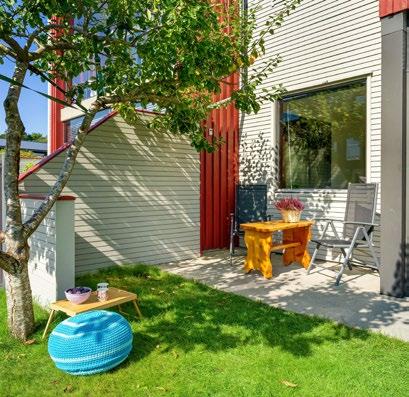
41
people who spend 30 minutes outdoors daily in any green space, including private gardens, are far less likely to experience depression
41
URBAN HEAT ISLANDS
Even one shade tree can make a difference to protecting against harsh western sun
According to the United Nations, 55% of the world’s population lives in urban areas; that proportion is expected to increase to 68% by 2050.
900 PROPAGULES PER GRAM,

YOU WILL NEVER GROW WITHOUT IT AGAIN.
DISTRIBUTED BY:
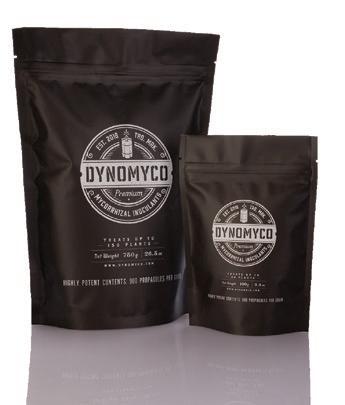


WWW.DYNOMYCO.COM
Verges
Nature strips on council land are often under-utilised spaces for planting gardens. Councils vary in policies, but many have guidelines for residents to plant low-growing species, including edibles and native trees along the curb. Extending green space beyond the front yard is one way to increase the vegetation and positively impact the UHI effect.
Trees and Shrubs
Mature trees and shrubs have a vital role to play too. When they pull moisture into their leaves from the soil, these plants help cool the air as the water evaporates from the leaf surfaces. Trees act like natural umbrellas, helping block and intercept the sun’s radiation before it hits the ground. While growing trees with large canopies in small urban gardens can be challenging, even one or two carefully chosen species can provide many benefits.
Trees and shrubs, including natives and edible species:
• Provide shade relief, especially against the harsh western sun or planted in front of windows.
• Reduce temperatures and cool the air through transpiration.
• Absorb carbon dioxide during photosynthesis improving air quality.
• Reduce pollution and may help mitigate noise.

• Provide habitat and insect forage.
• Improve biodiversity.
• Create a shady microclimate for underplanting.
Studies have found the effectiveness of trees in reducing temperatures occurs when they are healthy in soils with adequate moisture and nutrition. If trees suffer from drought or heat stress in poor soils, their capacity to provide all these potential benefits may be reduced. Thus, fostering and protecting urban soils with mulch or ground covers is part of our gardening strategy to support tree health.
Green Walls
Growing climbing species as living green walls can help mitigate heat on buildings by blocking and absorbing solar radiation (Bartesaghi Koc et al., 2018). Vertical garden structures are another option for greening walls (5), with smaller planters taking advantage of otherwise unused spaces for growing plants.
Green wall strategies are becoming popular on apartment balconies to improve enjoyment with cooler outdoor living areas. Urban gardeners can also enjoy a harvest and the cooling aesthetic benefits of a living green space. Examples include growing:

• Espaliered fruit trees against a wall in narrow spaces.
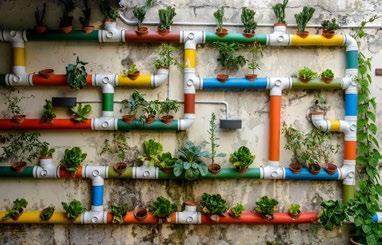
• Vining species like grapes, kiwi fruit or passionfruit and other edible climbers like nasturtiums up an arbour, pergola or trellis.
• Tiered hanging baskets or stackable planters that take advantage of vertical space with multiple plants.
4343 URBAN HEAT ISLANDS
Mitigating heat from urban building using vegetation
Our immediate environment affects liveability, enjoyment of life, comfort and health
Trust and Quality, for the most demanding growers

Hedges
Edible hedges provide shade protection from the hot sun and act as a windbreak and privacy screen to mitigate street noise and air pollution. Species like feijoa, olives and guava are ideal productive fruiting trees that can be trimmed and hedged.
Green Roofs
Rooftop gardens planted with vegetation help insulate the building, especially in summer when temperatures can soar. Roof gardens also help cool the nearby environment and reduce runoff and the need to run air conditioning by making a home more comfortable.
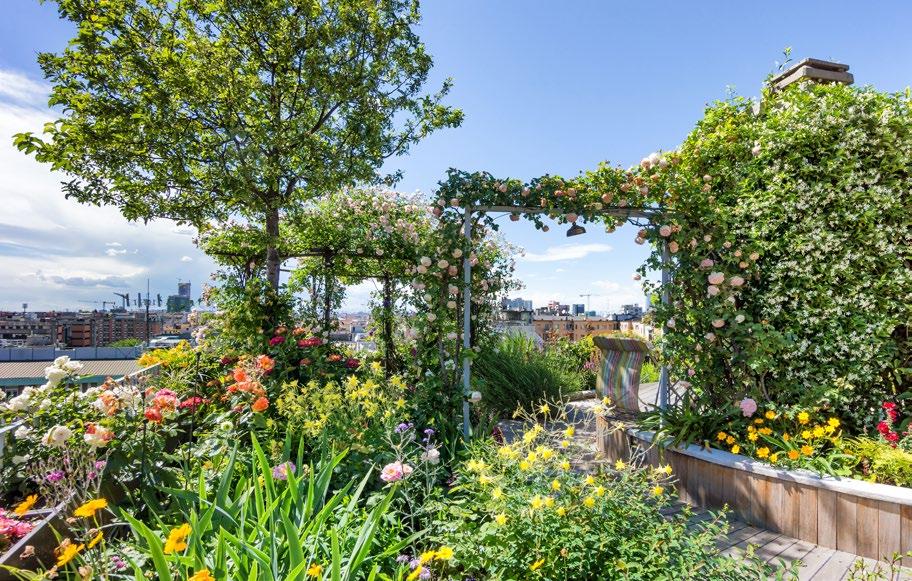
Planting vegetation in urban gardens
Finally, another study (6) found “cultivating medicinal and aromatic species” (including basil, thyme, oregano and salvia) along with fruits and vegetables (vineyard, lemon trees, tomatoes, cucumbers, onions, lettuce and red beet) were more effective in reducing the temperature by between 5-10°C during autumn, spring and summer compared to neighbouring properties with no vegetation.

I’ve spent over ten years consulting with clients in urban gardens, including balconies and rooftops and seen firsthand the many positive outcomes greening these spaces can bring. After many of these gardeners started improving their microclimates and using plants to create more favourable growing conditions, it has often had a positive domino effect on their neighbours and encouraged them to do the same. Ultimately, the more city gardeners that use these strategies, the healthier and more liveable our urban environments will become. 3
References:
1. Temperature Check: Greening Australia’s Warming Cities Report, (2021) https:// apo.org.au/sites/default/files/resource-files/2021-03/apo-nid311336_0.pdf
2. Where are all the trees? An analysis of tree canopy cover in urban Australia (2014), https://staging.202020vision.com.au/media/7145/where_are_all_the_trees.pdf
3. Climate change: an emerging health issue. Vol. 20(1–2), p6 (2009). NSW Public Health Bulletin https://www.publish.csiro.au/nb/pdf/NBv20n2
4. https://www.greeningaustralia.org.au
5. Exploring the evapotranspirative cooling effect of a green façade. Sustainable Cities and Society
6. Volume 81, June 2022, 103822. https://doi.org/10.1016/j.scs.2022.103822. Urban Gardens as a Solution to Energy Poverty and Urban Heat Island. Tsilini, V., et al. Sustainable Cities and Society (2014), http://dx.doi.org/10.1016/j.scs.2014.08.006
BIO Anne Gibson, The Micro Gardener, is an author, speaker and urban garden community educator on the Sunshine Coast, in Queensland, Australia. Anne is passionate about inspiring people to improve health and wellbeing, by growing nutrient-dense food gardens in creative containers and small spaces. Anne regularly presents workshops, speaks at sustainable living events, coaches private clients and teaches community education classes about organic gardening and ways to live sustainably. She has authored several eBooks and gardening guides. Anne shares organic gardening tips and tutorials to save time, money and energy on her popular website - TheMicroGardener.com
45
URBAN HEAT ISLANDS
Rooftop gardens planted with vegetation help insulate the building, especially in summer when temperatures can soar


Ditching Social Media To Create Better Connections
Social media serves many purposes and can connect us to people and places worldwide. But it can also create a dependency and, if not used responsibly, remove us from reality, distancing us from people and our natural surroundings. In this multi-part series, Alan Creedon writes about the highs and lows of his decision to leave social media behind and rediscover true connections.
Ilove social media. In 2016, I made a journey and fundraising campaign, which I mainly used Facebook to promote, where I raised over £20k for charity. I have used social media to share my thoughts with the world, from my first steps into writing to promoting my book and various events I host. You could say I’m attached to it. I know little else in terms of sharing what I do with the world, especially since I have children and less time to meet new people.
Real Engagement
I didn’t believe in social media for promoting stuff a few years ago. I actively felt it was a disconnected place. So my wife and I started, built - and when it wasn’t what we wanted to do together anymore - sold a relatively successful organic veg box scheme without ever using social media. I preferred talking to people, and it worked. It meant engaging people at market stalls, sharing the process through conversation, and the feeling of connection and of knowing who was supplying your food. We had good relationships with many of the growers we worked with and, in a weekly paper newsletter, would communicate and educate customers and help them feel more connected to their food.
Lost Connection
Over time, various life circumstances led me to become so involved in sharing my work over social media that I forgot how I once did things. My work now is perhaps not as practical as ‘veg in a box’ but should work by the same principle. I lost my connection with people by trying to connect with them through social media.
Recently, I started talking to people again. I decided that if I wanted to get work, I had to talk, not type. Social media didn’t seem to work for me; it is okay for sharing information but terrible for selling anything. This fact had a knock-on effect on my confidence, and I felt at a loss because it felt too difficult to find people to work with.
I had crossed a line.

Bye, Bye Social Media
Then a few things happened. First, I started talking directly with actual people about work again, and I was immediately getting more jobs. Then, my wife was reading Mark Boyle’s ‘The Way Home - Tales from a Life Without Technology’, and something clicked. Within a few days, I ‘announced’ on social media that I was deleting my Facebook, Instagram, LinkedIn, and Twitter accounts within the week.
I decided to replace social media with more time outdoors and with my family – talking to and being with actual people, spending time in my allotment and garden, and having my newsletter as my regular focus for ‘sharing.’ It felt weird to make that choice, but I started to see something straight away. I was entirely dependent on social media and felt scared about giving it up. I believed my responsibility was to share and ‘influence’ using these platforms, but my ego was about to be put in its place.
Every Action Counts
When I announced on social media that I was leaving (sounds so pompous, but it was just to let people know I wouldn’t be around anymore), I stated my reasons for doing it, and that was it. But, as with all ‘big’ decisions, it felt hasty, like I was doing something wrong or somehow letting people down. It was a strange feeling. People told me I shouldn’t leave because I had exciting things to say, and this was the place to display them because it could make a difference. They talked about things like ‘social proof’. But I had been increasingly feeling the vacuousness and unreality of social media.
BY ALAN CREEDON
48
part 1
Second Thoughts
For years I’d been sharing my writing and opinions, and some people liked it. I shared self-care tips, how to slow down and connect in the natural world, meditation and mindfulness practices, and more. I would also share how disconnected we are from Nature and how the natural world wants our attention; we need to stop only seeing it as a resource. I suppose there was some value in all of that.
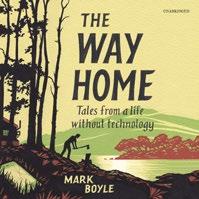

I had many reasons in my head not to give up social media. First, I saw my ‘friends’ as an asset, or perhaps potential value, as my potential customer base. But that’s not how I wanted to view friends. Second, I feared I would disappear ‘off the map’ of being acknowledged and ‘seen’ by others as ‘real’ and productively operating in the world. That was another weird thing; I thought I might feel lonely.
And then Facebook delivered. In the last few days, something weird happened. A post I had made went viral. Not mega-viral, under 100 shares. But I found it fascinating how that happened right at the dying stages of my life online. It was as if I had been graced by a God-like algorithm, pleading with me to stay and showing me the raw power of how ‘likes’ and ‘shares’ combined could make me finally feel like I was somebody. From there, friend requests started coming in from all over the world! It was bizarre.
Pulling The Plug
When I finally closed all the accounts, I felt relief. It was over. I could open my eyes again and know who I would communicate with for work and friendship would be the people in front of me. Whoever I decided to get in touch with, it would be by phone or email. That felt amazing. What also felt great was knowing that I would no longer be the butt of manipulation by targeted ads and fake news in the ever-darkening and dystopian world of social media.
Alan’s life without social media is about to get a lot more interesting! Read more about his journey of disconnection in our next edition! 3
BIO Alan has worked in local food for over a decade and in that time has been involved in retail, wholesale and growing local produce. He is passionate about people working together and enjoys bringing his ideas into the world of veg. He lives in the West Yorkshire hills with his wife, daughter, son, dog and cat and loves walking in the hills, sleeping out in the woods, and having a dip in the river (but would sometimes prefer sleeping out in -3 than a dip in the river!). He will be publishing his first book this autumn. He is a mindfulness teacher, running regular courses and events as a nature connection guide. He likes to combine the philosophical with the practical.
DITCHING SOCIAL MEDIA
49
49
I decided to replace social media with more time outdoors and with my family – talking to and being with actual people, spending time in my allotment and garden, and having my newsletter as my regular focus for ‘sharing.’
Bio-Intensive Gardening
Bio-Intensive Gardening
Growing Large While Using Less
Amplifying the soil’s natural abilities, bio-intensive growing changes how and where food is cultivated.

50 BY JENNIFER COLE
It’s been almost 20 years since Maude-Hélène Desroches and Jean-Martin Fortier co-founded Les Jardins de la Grelinette in St. Armand, Quebec. At the time, the idea of growing a lot of produce on a hectare of land and making it financially viable seemed daunting. However, after years of hard work, the micro-farm generates CDN$100,000 per acre annually and has become internationally renowned for what bio-intensive growing can accomplish [1]. Caring for the soil is critical in this system.
“In winter, we tarp the beds to keep in nutrients,” Desroches says. “Crop rotations that return what has been taken out of the soil are also essential.”
Re-Inventing Small-Scale Growing

Bio-intensive growing focuses on achieving maximum yields from a small piece of land while encouraging a biodiverse range of crops and maintaining soil fertility. One of the best examples of this growing method’s effectiveness was in the 19th century. Cultivating the marshes surrounding Paris, France, growers used horse manure to fertilise the ground and produced food on small plots of land, often less than an acre, to feed an entire city [2]
The Industrial Revolution and the introduction of automated machinery such as tractors and turbines allowed more food to be grown for the populations in evolving urban centres. As a result, the independent small market garden grew out of favour – until now.
Eliot Coleman’s book, “The New Organic Grower” (1989), chronicled his experiences creating a small market garden farm in Maine. Immediately popular with a young generation of growers embracing the local organic food movement, the book became the standard of small-scale growing worldwide. Now in its 30 th edition and inspired by those Parisian market gardeners, it details tips and tricks on preparing the soil, the equipment needed, and what to grow [3]
In 2012, Jean-Martin Fortier’s book “The Market Gardener: A Successful Grower’s Handbook for Small–Scale Organic Farming” built on Coleman’s success and detailed experiences at Les Jardins de la Grelinette using raised beds, tight crop spacing, and success in producing multiple harvests throughout the growing season [4]
But it’s John Jeavons who, in 1972, is widely acclaimed for re-branding micro-farming and market gardening and creating his trademarked GROW BIOINTENSIVE method. He aimed to train people to feed themselves while building and preserving the soil
and conserving resources [5]. The experiences and research of Coleman, Fortin, and Jeavons have become the standard of bio-intensive farming in the 21st century.
The Nitty Gritty
Bio-intensive growing is a holistic system that applies many of the same principles of regenerative growing, such as low-till, cover cropping, and banning synthetic fertilisers and pesticides. When done correctly, a bio-intensive garden can potentially use 67 to 88% less water than conventional agricultural methods, 99% fewer fossil fuels than commercial farming, and can reduce the amount of land required to grow a comparable amount of food by up to 50% [6]
Double-digging trenches up to a foot deep, adding natural organic compost to the bottom of the channel and re-covering the ditch with the pre-dug soil aerates and nourishes the earth. Then, when it comes to planting, forget traditional rows of cabbage or kale. Instead, triangle or hexagon patterns accommodate four times as many plants while forming a living mulch over the soil, retaining moisture and shading out weeds. Once the beds are prepared, no automated tools or equipment are used, and other than planting, the earth is rarely disturbed.
60/30/10
For many growers, Jeavons’ 60/30/10 formula is their guide to maintaining healthy soil balance in a small space. Compost crops, whose roots stay in the ground after harvest to replenish the soil, make up 60% of what is grown and aid in multiple plantings through the growing season. The formula is followed closely at Les Jardins de la Grelinette
“We wait one to three weeks for the foliage and roots to decompose back into the soil and then replant,” Desroches explains.
5151
Bio-intensive growing focuses on achieving maximum yields from a small piece of land while encouraging a biodiverse range of crops and maintaining soil fertility
BIO-INTENSIVE GARDENING
the micro-farm generates CDN$100,000 per acre annually and has become internationally renowned for what bio-intensive growing can accomplish
It’s about inspiring a transformational change in how people eat and protect the planet.
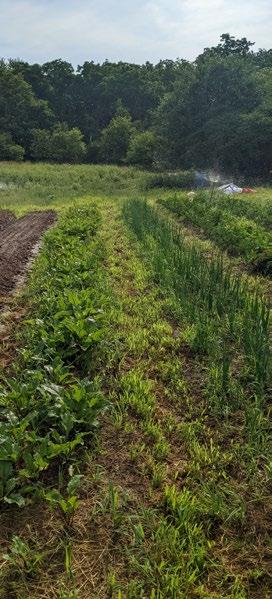


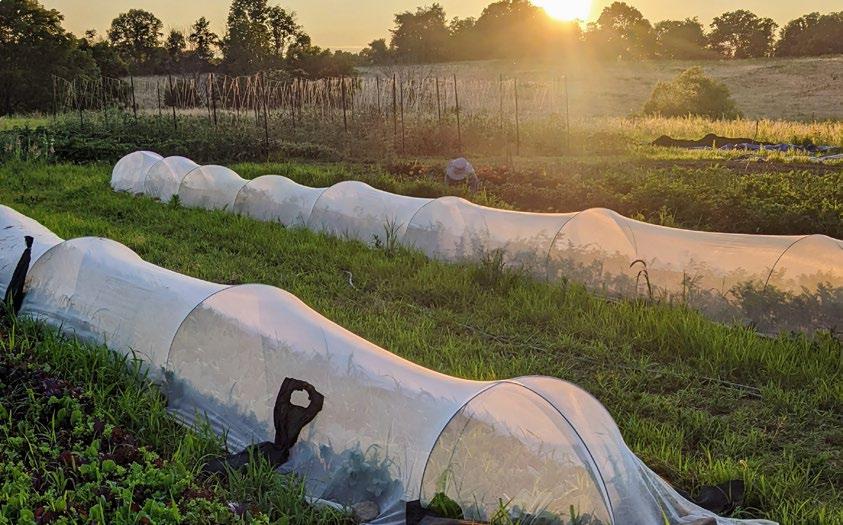
52
For crops to thrive, balance is crucial. Certain plants deplete various nutrients from the soil as they grow. For example, Desroches rotates lettuce, which sucks up nitrogen, with peas, which return the essential nutrient to the soil. This way, synchronicity is maintained.
Calorie-rich root crops, such as potatoes, garlic, leeks, burdock, Jerusalem artichoke, carrots, beets, and parsnips use up 30% of the land in Jeavons’ formula. These starch-filled tubers produce five to 20 times the calories per unit of area as per unit of time needed to grow them. An optional 10% of the land can be used for income crops suited to the grower’s area [7]

Creating Change
For those choosing to grow bio-intensively, it’s about more than how much food can be harvested. It’s about inspiring a transformational change in how people eat and protect the planet. Growing on a smaller scale preserves land and enables the surrounding ecosystem to thrive.
Alexandra Powell has operated Alexandra’s Farm for over a year in Ayr, Ontario. She grows tomatoes, peppers, radishes, lettuce, onions, beets, green beans, herbs, and squash on a quarter acre. She’s passionate about how nature connects even the microbes in the soil to open up channels for air and water that feed the crops she plants [8]
“I’ve always loved nature, and once you discover how toxic the industrial food system is, you want to do something positive to change it”, Powell says.
David Whiteside of Les Jardins de la Marmotte in Bromont, Quebec, spent time at Les Jardins de la Grelinette learning the best bio-intensive growing practices. In 2023, he will grow and harvest 35 different vegetables and herbs on less than one and a half acres. His soil amendments include green compost, chicken manure, and alfalfa meal [9]
“I don’t know the yield of what I grow, but the current CSA programme provides 75 shares for an average household of at least two people every week throughout the growing season,” explains Whiteside.
He says it’s not just about what he produces. He’s also proud to create a local, ecological food system that rebuilds relationships between urban and rural populations.
“I am not very mechanical and probably wouldn’t know how to fix a tractor if it broke down, so the idea of working by hand is appealing,” he says. “It all just connects you back to the land, like in the old days.”
Desroches now operates Les Jardins de la Grelinette on her own, while Fortier continues researching new bio-intensive techniques, writing new books, and training new generations of growers. His online organic farm course is taught in 65 countries. Together, they are proving that it doesn’t matter how small an area of land you have; it’s about how you care for it.
“I hope it’s part of a societal change in how people see nature,” says Desroches.
She knows complaining won’t change anything, but showing what’s possible will. 3
Footnotes
• The gardens of the grelinette | St-Armand, QC (lagrelinette.com)
• The history of market gardening | alimentarium (alimentarium.org)
• Home – Eliot Coleman & Barbara Damrosch (eliotbarbara.com)
• Jean-Martin Fortier - Farmer, educator and best-selling author (jeanmartinfortier.com)
• Ecology Action: Home (growbiointensive.org)
• Biointensive agriculture - Wikipedia
• What Is Bio-Intensive Gardening And How It Is Prepared? (gardensimply.com)
• Home | Alexandra’s Farm (alexandrasfarm.ca)
• Welcome | Groundhog Gardens (lesjardinsdelamarmotte.com)
Additional Resources
• Micro-farming (mcgillnews.mcgill.ca)
• This Quebecer is planting the seeds of a small-scale organic farming movement | CBC News
• Biointensive Farming: Importance, Examples and Principles - Conserve Energy Future (conserve-energy-future.com)
• J.M. Fortier and the Rise of the High-Profit Micro Farm - Modern Farmer
• Biointensive farming: the future of our food production system | FAO
5353
Bio-intensive growing is a holistic system that applies many of the same principles of regenerative growing, such as low-till, cover cropping, and banning synthetic fertilisers and pesticides
BIO-INTENSIVE GARDENING


Adjusting
pH
The acidity or basicity of soil is reported using the pH scale, which ranges from 0–14. A pH less than 7 is acidic, a pH greater than 7 is basic (alkaline), and a pH of 7 is neutral. Most plants prefer a pH range from about 6 to a little over 7. In a previous article, we reviewed the importance of soil pH for healthy plant growth and described several methods for determining soil pH. In this follow-up, we’ll look at adjusting soil pH to provide optimum conditions for plant growth and development. Soil pH is adjusted differently than it is in hydroponic solutions.
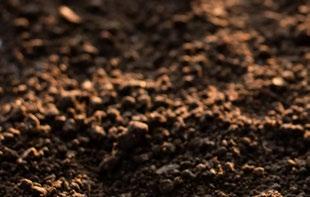
The best
check and adjust soil pH is before planting seeds or transplanting starters
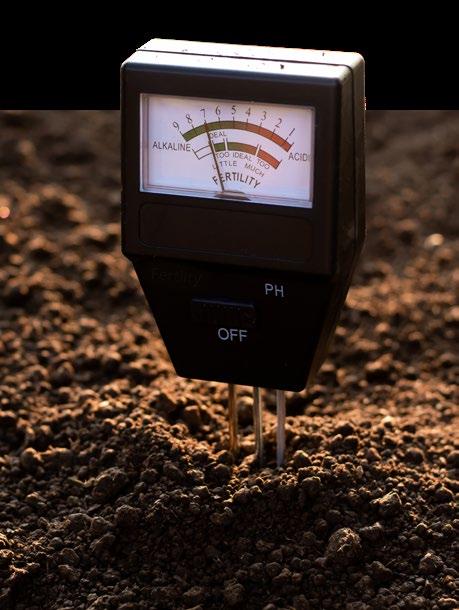
Understanding pH
First, it is essential to understand the pH requirements of your plants. For example, if you are growing acid-loving plants such as blueberries, your goal for obtaining a particular soil pH is not the same as growing alkaline-tolerant plants such as cabbages or asparagus. Note the term “alkaline-tolerant” and not “alkaline-loving” because plants that do well in basic soils also tend to do fine in neutral or slightly acidic soils. Once you decide what soil pH suits your plants and know the current pH, you can adjust it. The pH of the soil is adjusted by adding either an acidic material to lower the pH or a basic material to raise the pH.
Good Timing
The best time to check and adjust soil pH is before planting seeds or transplanting starters. Before testing garden soils, it is a good idea to till and thoroughly mix the soil to make it as homogenous as possible. Test samples from several places in the garden because the pH can vary by location. For container gardening, mix and adjust the soil in bulk (like in a wheelbarrow or the back of a pickup truck) to adjust as much of it at one time as possible. It doesn’t make sense to test and adjust several containers separately. Adjust the soil pH before you fill the containers.
Nothing Is Perfect
Don’t worry about getting the pH exactly right for your plants. If you are growing various things, it is unlikely that every species in your garden has the same pH optimum, so you’ll have to settle for something that will work for everything while not being perfect for most. Remember that there is uncertainty in pH measurements, so if you are within 0.1–0.2 pH points of your target, that is good enough. You won’t be able to tell the difference in the performance or quality of garden plants grown at pH 6.7 compared to ones grown at pH 6.8. For container gardening, mixing custom batches of substrate pH-optimised for whatever you are growing is more feasible. The options for adjusting pH depend on whether you are a conventional or strictly organic grower.
BY PHILIP MCINTOSH
56
time to
Lowering pH
All right, so you decide that a pH of 6.7 is your goal, and the current pH is greater than that (say 7.2), as is usually the case with calcareous soils formed over limestone bedrock. A classic way to organically lower soil pH is by adding peat. Peat breaks down slowly, lasts a long time, and has several desirable physical properties, but it is a non-renewable resource. Peat takes hundreds or thousands of years to form, and extraction and reclamation of peat bogs destroy a significant carbon sink, so alternatives are preferred. Another organic option is sulphur, as found in sulphur-bentonite clay or gypsum. Sulphur compounds work by increasing the population of sulphur-metabolising bacteria that release acid into the soil. As with limestone, apply sulphur before planting since the bacteria need establishing time. Conventional growers will often rely on fertilisers containing ammonium nitrate (NH3NO3) or the addition of aluminium sulphate [Al2(SO4)3] to do the job.
Increasing pH
Now let’s consider the situation where you want a neutral pH of 7, but your soil is acidic with a pH of around 6. Acidic soils exist where high rainfall leaches alkaline material out of the ground, where weathering releases acids from minerals in the soil, and the breakdown of organic matter. Soils in regions where there
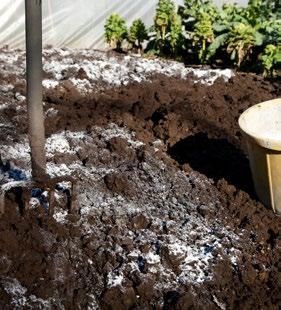
are lots of pine trees are usually acidic. Both organic and conventional growers can raise soil pH by adding lime (calcium carbonate—CaCO3), wood ashes, or sodium bicarbonate (baking soda—NaHCO3). Two to five pounds of lime per 100 ft2 (0.1–0.55 kg/m2) is usually recommended, with sandy soils requiring less and clay soils needing more. Finely ground limestone will dissolve faster and act more quickly than a courser grade, but in either case, it usually takes a while to reach equilibrium. This is why it is best to add limestone at least a month before planting to allow it to have its effect. If you can’t wait that long, hydrated lime [slaked lime—Ca(OH)2] is quicker acting but is not an allowed organic soil amendment. Crushed oyster shell is a slow-acting alternative, and crushed eggshells can be added for small home plots but have a relatively minor effect. An advantage of limestone is that it lasts longer than other treatments. Wood ashes raise pH relatively quickly but don’t last as long, and baking soda acts quickly and does not last long, but it is safe for plants even if you overdo it.
Checking pH
With all of these amendments, it is essential to work them into the soil to a depth of around 6 inches (15 cm). Once you achieve the desired pH, check it periodically (at least once per season) since it will change over time depending on rainfall, weathering, and biological activity. And whatever you do, check it before starting up again next year. 3
Philip McIntosh holds a B.Sc. in Botany and Chemistry from Texas State University and an MA in Biological Science from the University of Texas at Austin. He has been publishing professionally for over 30 years in magazines, journals, and on the web on topics relating to botany, mycology, general biology, and technology. As a STEM (Science, Technology, Engineering, and Math) educator, Phil enjoys working with students to help them advance their knowledge and skills in relevant fields of learning.
Bio
Both organic and conventional growers can raise soil pH by adding lime (calcium carbonate— CaCO 3 ), wood ashes, or sodium bicarbonate (baking soda—NaHCO 3 ).
ADJUSTING SOIL PH 57
Once you achieve the desired pH, check it periodically (at least once per season) since it will change over time depending on rainfall, weathering, and biological activity.
N o tes FromADirty Old Gardener
And Be e Buffets
We can put up the condos and parking lots, but we can’t seem to replace the flora and fauna we’ve lost
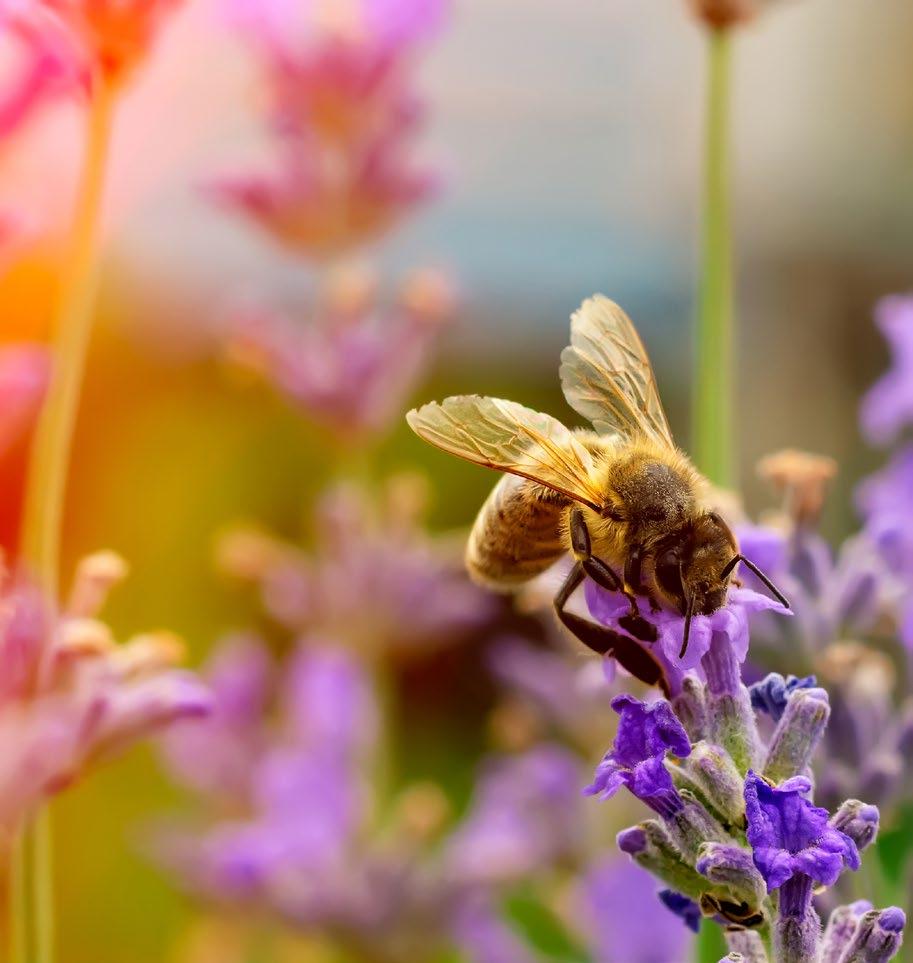
BY REGI ONETON 58
It can’t be all zucchini and rhubarb in the garden or at the homestead anymore. I don’t know if anyone has noticed, but Mother Nature has taken a beating globally and in our backyards. Humans are good at breaking things but terrible at fixing them. We can put up the condos and parking lots, but we can’t seem to replace the flora and fauna we’ve lost.
I am sure nobody knows what the butterfly effect of all these actions will be.
Botanical Gardens
So, aside from treating my acre of land like a monastery and direct food source, I am introducing a plethora of new flower species that I acquired through my usual channels, the elderly. Sadly, I have a neighbour who lost her dirty old gardener recently. This guy’s garden makes mine look amateur in comparison. She came over with a duffel bag full of seeds he had saved over the years. She wanted me to have them, knowing I like to toil in the soil and possibly breathe new life into this man’s garden legacy. I’m a fan of Italian produce, so it took me a moment to get motivated to do anything with this windfall of flowery genetics before I remembered the bees.
Bring Back The Bees
I barely saw a bee last season and had to pollinate many of my crops manually. So with that in mind, I have decided to carpet bomb every square inch of free space with a slurry of seeds in hopes of diversifying my ecosystem and giving the bees a place to suckle. As soon as weather permits, operation “Flower Power” goes into effect. This slurry of seeds contains some things I recognise, but the majority are a mystery to me as someone with zero floral skill or knowledge outside zucchini. What the hell is a Croscomia “Copper tip” or Liatris spicata “Blazing Stars” or Veronica spicata? I don’t know, but they sound cool, and I am excited to let them join the botanical family in hopes of fattening up these bees like an Italian grandmother during the holidays. Eat, I say, EAT!
Bee-Friendly Actions

There are a few things you can do, my dear reader, to help improve the environment in your backyards, whatever size they may be. As much as I’d like to break out the lawnmower the second I see a sprout poking out of the ground, I am going to hold off until at least mid-June to let the local flowers grow and give those bees who have been wintering inside a box for five months a chance to get at the pollen. Keep a clean garden, but not too clean. Leave a few dead logs around and create a habitat; create a deadfall hedge if that’s more your cup of tea because
nothing is more useless than an enormous expanse of green lawn. Imagine being a bee looking for pollen to bring home to feed the kids so your bee wife doesn’t yell at you for being “useless”, but all you see is an ocean of green. If you feel fancy, inoculate those logs with your favourite mushroom spores. You can even make them magic; I won’t judge. Just share a few with me.
Support Local Beekeepers
I am fortunate to live up the road from a few amateur beekeepers. These people hold our ecosystems together because, without the bees, we are, for lack of a better word, fucked. I pop by whenever the sign says “Honey Season Open” because supporting these businesses and those running them is crucial. Frankly, the product tastes leaps and bounds better than what comes out of those little plastic bears you find at the grocery store. Think of how wonderfully cyclical it is for the bee to be collecting from the flowers on your property, taking it back to his wife and kid and turning it into a sweet medicinal treat with a shelf life of eternity. I am a slight nature geek, so it’s ok not to share my enthusiasm. But you should be enthusiastic about keeping 10,000 bees in your backyard.
Diversify!
Whether White Shasta Daisies or Western Sunflowers, let’s diversify and avoid what’s readily available; take a risk this year. Plant a little Bee Balm for that poor bee and his crappy marriage. Plant some Inpatient and Black-eyed Susans. Let’s collectively make our gardens pop with the bright yellows of Rudbeckia or whatever seeds you traded your neighbour for, as long as you play in the dirt. I am just a little on the fence about planting this Lobelia Syphalitica, as naming something after a venereal disease doesn’t inspire much confidence. However, she is a beautiful deep blue and purple, so I might risk it.
Happy growing my little bean sprouts. I will be in the garden strolling around with a salad bowl of seeds, preparing my bee buffet. 3
5959
DIRTY OLD GARDENER
I barely saw a bee last season and had to pollinate many of my crops manually
BIO Regi Oneton is a multi-disciplinary artist and daytime executive. He’s been a member of Socan since his first album release at the age of 20, and is a self-taught audio engineer and self-proclaimed studio rat. Regi is a late-blooming street artist and painter whose works can be found hanging in the offices of Burton and Vans Canada. Long-time contributor to the Under Pressure Graffiti Festival and lover of the Arts. As the years plow forward, he has added botanical enthusiast/plant father to his litany of passions. His interests include writing and spending too much time looking at his phone.
Are The New Normal,
Heat Waves So How Do We Adapt?
Ironically, I wrote an article about gardening in extreme wetness last year. Now, we face the possibility of not having rain for months

BY MARTYNA KROL
60
With another growing season underway, I am reflecting on our changing climate. I remember the long and cold spring of 2021, followed by a short summer and a wet winter. The 2022 season, on the other hand, was mellow from the start, with warm spring days and no late, unexpected frosts. As the summer solstice approached, it gradually became drier and hotter, with hose pipe bans starting in the south of England, Wales, and eventually in my county, one of the wettest in England. Ironically, I wrote an article about gardening in extreme wetness last year. Now, we face the possibility of not having rain for months.
An Emotional Rollercoaster
I found the first heat wave of mid-July last year to be rather splendid. I was on top of the moorland by a cold Yorkshire dam, interlacing refreshing swims with a chilled lie down under a shady tree with 36°C hot air stroking my face like I was in the Mediterranean. I felt happy, but in the back of my mind, I knew that if I were stuck on a London tube or any city flat with no airflow, or frankly, anywhere but where I was at the time, I would not be so smug. With worry, I observed local water dams getting lower, most breaking records and often uncovering long-forgotten rubbish or infrastructure like bridges from when they were still vibrant valleys and not water supply reservoirs. One of the local dams dropped 11 metres below the standard water line, with a cracking bottom resembling a desert. Plants and weeds began to grow, and sheep came down from nearby fields to graze. Dystopian, yet still beautiful.
I was initially excited about how many apples I would have thanks to the heat, but within weeks, I started noticing the smaller ones dropping and the larger ones being eaten by birds. The same thing happened to the plums; the late-developing ones were dense, bitter, and damaged from hungry beaks. It made me think of the animals and their food sources.
The worms and organic matter travelled deeper as the soil dried out. Reports of juvenile birds, hedgehogs, and badgers dying of hunger and thirst were heartbreaking.
It wasn’t long before my sweet, enormous grapes in the polytunnel started to drop like flies, with whole clusters at the end of the vine shrivelling. I was inadvertently growing bitter raisins. With the hose ban in place and relying on water from a nearby spring, I realised I should not have taken it for granted. Meanwhile, we regularly witnessed stupidity, such as individuals watering their lawns or fiddling with spring water pipes to snitch more water for themselves with zero consideration for their neighbours or the environment.
Soil Science
I wondered what must be done to my allotment and many others nationwide. We need to be more prepared for these events that will likely roll in year after year. So, I began digging deeper into the world of soil science, familiarising myself with the attributes of Soil Organic Matter (SOM) and its properties; improved soil aggregation, water filtration, reduced compaction, and, most important, the capacity to hold water in the soil.
With numerous research studies and papers available, it is clear that increasing SOM benefits plant nutrition, but this statistic got me hooked: a 1% increase in SOM results in about 20,000 to 25,000 more gallons of available soil water per acre or acre-inch. Considering that most soils have only 1-2% SOM, there’s a lot of room for improvement. Having looked at the evidence provided mainly by regenerative cattle ranchers in the United States, there are reports of 10-15% SOM increases in the land. That’s a lot of water that is held in the ground. Similar examples of reversed desertification can be found when looking at Soil4Climate and their impressive work with the Massai tribe in Kenya (look them up!).
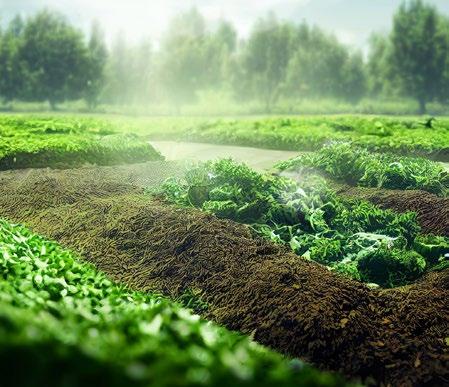
Following this trail, I figured out an action plan to implement this year so that my crops, the animals in my environment, and my sanity remain intact:
Increasing the SOM in all growing areas. In acidic clay soil, this requires heavy mulching, adding compost, sand, coco coir and biochar to break the clay structure. Activated Aerobic Compost Teas will also be on the cards.
61 HEAT WAVES
The worms and organic matter travelled deeper as the soil dried out. Reports of juvenile birds, hedgehogs, and badgers dying of hunger and thirst were heartbreaking

Hugelkultur for the win! This is my favourite method of building raised beds these days. So much has been said about the Hugelkultur in previous articles, but seeing the benefits of Hugel beds two or three years down the road is mind-blowing. Water retention is spectacular, and plant growth is vigorous and pest-free. Last year, one of my beds fruited with Wood Blewit mushrooms, which have a bergamot fragrance, purple appearance, and come at a premium cost at a posh London market stall.
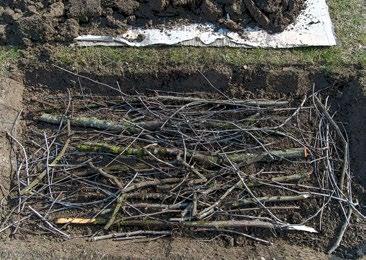
More plants, less work! No dig method (which, coincidentally, I came across in my first year of growing and can not recommend enough to any beginner gardeners), keeping the plants in the soil year-round and integrating livestock into crop rotations. It may not be easy for many to do the latter, but befriending a local chicken group may get you some good chicken manure, which can do the job until you get your own herd of native cows.
Shading in the greenhouse and the garden. This may not seem like a solution initially, but shading is practical and can provide a difference of around 10°C, which can be a life or death matter for many plants and insects.
Keeping the little ones in mind. The last but most important thing we can do is to support the animals mindfully. Water bowl availability is paramount in several corners of the garden, both on the ground and higher up for different clientele. In bird nesting season, avoid feeding dry seed, as it discourages young parents from looking for bugs and spiders, essential food for their fledglings. Environment and shelter are the most important; a little messy corner in the garden hasn’t caused any harm to humans, but for a hedgehog needing respite from the scorching sun, this may be the thing to save its day or life.
The heat and its consequences are inevitable. It will change how we grow, build houses, and function as a society. The humanism in us must shine, and the drive to protect what we have left should spur us all into action, no matter how grand or small. The solutions for change are there; we must keep finding and perfecting them. 3
Hugelkultur
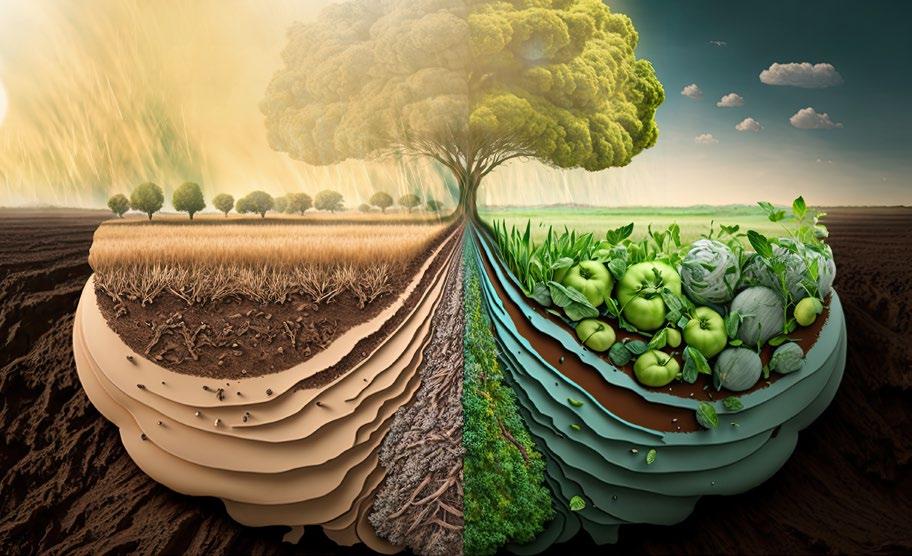
6363
seeing the benefits of Hugel beds two or three years down the road is mind-blowing
HEAT WAVES
BIO Martyna Krol is a vegetable grower, natural beekeeper, and edible spaces designer. She is a lover of all soil and urban farming techniques and is the former head of growing at Incredible Aquagarden.
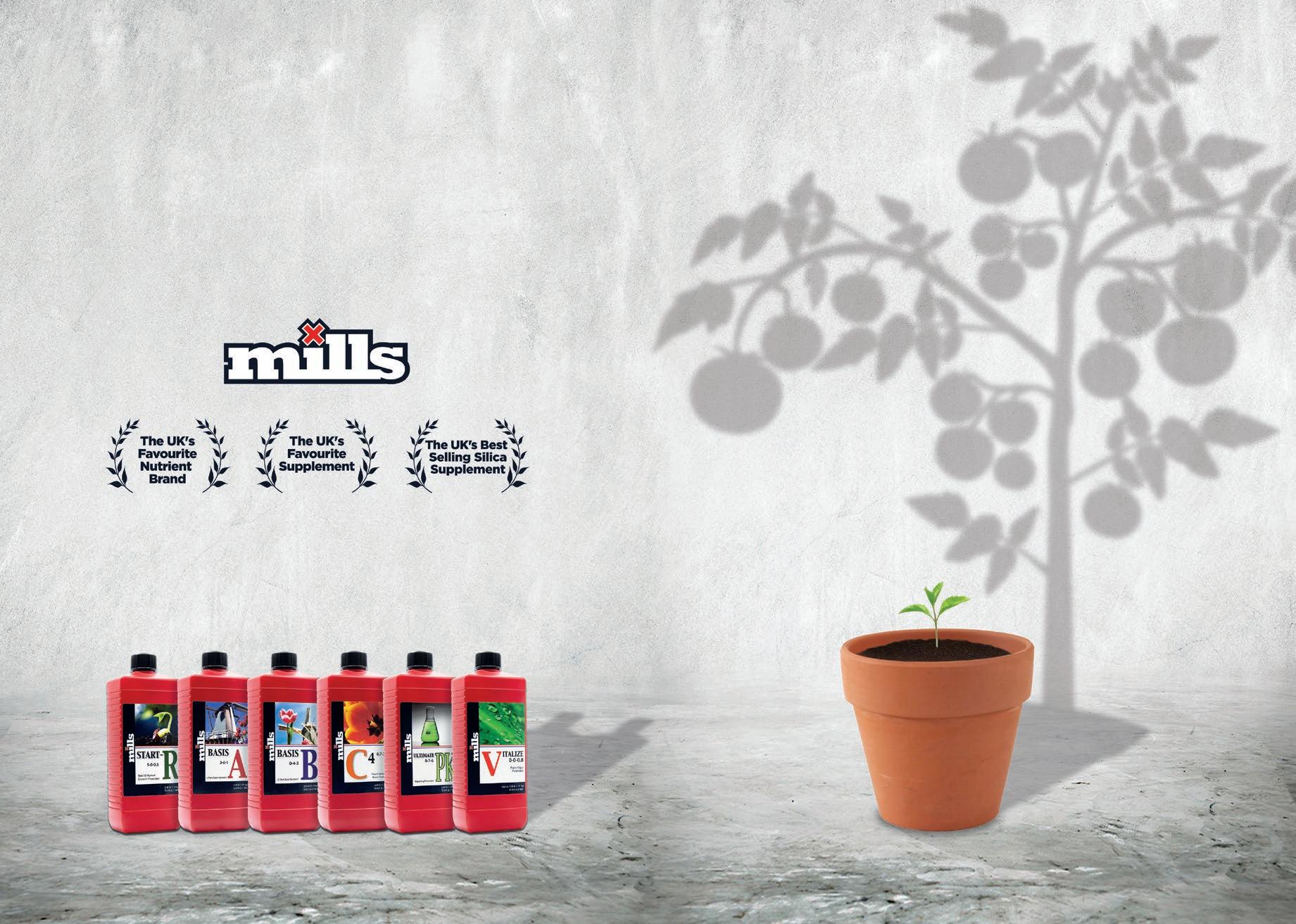



Keeping Chickens

why
A Circular Economy For Soil Regeneration
Every winter, my chickens build our compost for the following spring on our mountainside orchard in the Quebec Canadian Shield. Our rocky soil is the product of 3 billion years of glacial movement over several ice ages. Add a complete clear-cut of the area in the 1950s, and you have a mixture of sand and clay with a minimal nutritive organic component. On the bright side, the land is not recovering from industrial farming practices!
BY MARCI BABINEAU 66
A story about how and
one Canadian gardener includes chickens in her backyard growing regime.
Because I am a small-time grower of primarily nuts and fruit, my solution is a small flock of chickens
Hen Regeneration
Farmers everywhere ask how one overcomes the absence of nutrition in our soils. Most answers stem from the natural activities of organic material left to its own devices. Because I am a small-time grower of primarily nuts and fruit, my solution is a small flock of chickens. These lovely birds live pretty happily through the Canadian winter in a sheltered spot with a couple of heat lamps. They eat and drink more in the colder months to replace the insects and fresh greens they eat during the summer. Their egg shells and scraps from the kitchen get whirred up in the magic mixer so everything is peckable. Whenever I can, I throw in great heaps of greens. Whatever is left behind helps start the compost magic. What goes in must come out; they go through a lot of bedding in the winter. Wood shavings and gathered fall leaves are a perfect substrate for their gifts.
A Comfy Coop
Winter in the Laurentian mountains of Quebec can have weeks of temperatures between -20°C to -30°C, so the coop and pen must have a combination of robustness to carry snow load, heat retention, light and airflow. The coop, where they sleep and lay, is built against a stone wall for thermal mass. The pen surrounding it is 6 feet tall by 12 feet with dog wire around the top and sides. For the winter, I attach sheets of 10mm double PVC to the sides to give them as much light as possible. The entire pen has a tin roof. With the 12 hens and two heating lamps, the pen stays between 5°C and 10°C all winter. This warmth also keeps the layers of bedding slowly working.
The Deep Litter Method
By mid-April, the hens have gone through about 20 compressed cubes (200 cubic feet) of wood shavings. I practice the deep litter method of managing this bounty by letting it build on itself from October through April. They scratch through it and mix it with
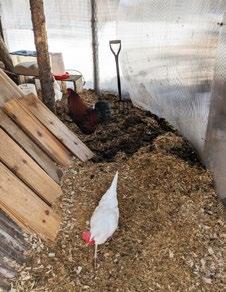
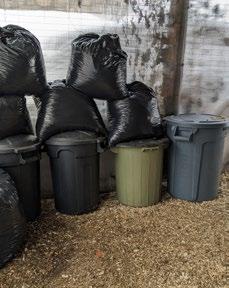
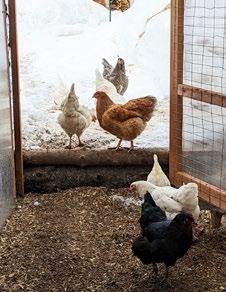
the dirt floor during this time. When the spring rolls around, the floor thaws, and they begin scratching for worms. At some point, I hoe up some of the floor for them to hunt through, and there is another mixing. Bringing the dirt up also neutralises the creation of ammonia. When temperatures are consistently around 15°C, and the smell of ammonia prevails, it’s harvest time!
The Compost
Sometime during the winter, the coop area must be emptied, as chickens release most of their goodness at night. This goes into a collection of sizeable lidded trash cans with some water and stews in the coop, releasing a modicum of heat. I will mix these cans with the coming year’s food and soft plant compost for preparing vegetable beds the following autumn. This practice ensures that toxins neutralise.
Otherwise, the combination of chicken manure and wood shavings will provide a high acid, high nitrogen slow-release mix, perfect for directly mulching trees and perennials. The mini-biome set up around the bases of the mulched trees and berry bushes invites mycelium to build there, further setting up a desired nutrient exchange. A mixture of about a quarter of chicken bedding to three-quarters of soil works for direct application to annual flower beds. I throw it on the bed and scratch it in with a rake.
During the first short warm period in April, the pitchfork, wheelbarrow and I go in to start the harvest. It is piled near the coop and sits under a tarp until I distribute it through the orchards in May.
Keeping chickens is essential to building soil in my neck of the woods. My hens are happy, the soil is healthy, and as a result, my plants thrive. 3
6767
KEEPING CHICKENS
BIO Marci Babineau grew up in gardens in California and Georgia. She currently gardens north of Montreal, Quebec, where she has nestled a food forest into a south facing hillside. Working in organic gardening and landscaping for 40 years, she has written about and taught a variety of gardening topics to young and old in Montreal and Cambridge,UK.
the combination of chicken manure and wood shavings will provide a high acid, high nitrogen slow-release mix, perfect for directly mulching trees and perennials
The Compost
Beneficial BBnB nB Beneficial
While the Plants Are Away, Let Mycelium Play
When the outdoor gardening season has come again, many folks shut the indoor grow down in favour of free sunlight, integrated pest management by a diverse and balanced local ecosystem, fresh air circulation, and rainwater irrigation.

BY XAVI
KIEF
68
After the final indoor harvest in the spring and the space is clean again, consider the opportunity to use this square footage and some of the basic equipment of your plant cultivation to amp up autumn with a batch of beneficial fungi.
Substrate Selection
If you’ve never grown mushrooms or prefer to keep it simple, seek out an already-inoculated substrate. Look for grain spawn rather than a “grow kit”; the difference is that grow kits are generally much farther along their life journey, the mycelium almost thoroughly colonised in the bag, now seeking an opportunity to burst forth and produce reproductive fruiting bodies (i.e. mushrooms!). Thinking of a grow kit like a potted vegetable plant with roots fully established throughout its container, spawn is analogous to a tray of sprouted seeds. You could cut them down for microgreens and enjoy a small harvest, but you’ll likely want to spread them out, let them develop independently, and produce an exponential yield.
Potting Up
This ‘potting up’ process, known as moving spawn into ‘bulk substrate’, usually involves sterilising or pasteurising this medium. Since you want to balance risk and reward, hardwood pellets produced for wood heating are a good pre-sterilised, storage stable, uncomplicated and low-budget choice. They will require hydration and thorough mixing to ensure no pockets of stagnant water or dry material (both of which mycelium will avoid), and most cultivators will add 2-10% (by dry weight) of food-grade gypsum (Calcium sulphate) to the batch for mycelial health and improved yield. Combine under the cleanest conditions you can manage (minimally wear gloves, work quickly, and reduce the opportunity for contamination by exposure to airborne competitors). A high ratio of grain to wood is around 1:40 by volume; the more grain in the final mix, the faster the mycelium will use up its food and try to fruit, so you may want to experiment with this factor.
Spawn Selection
There are a few primary considerations to choosing a spawn type to grow. Oyster mushrooms are the most ubiquitous and beginner-friendly, as many varietals make up a diverse group differing mainly by a preference for either cool or hot weather.

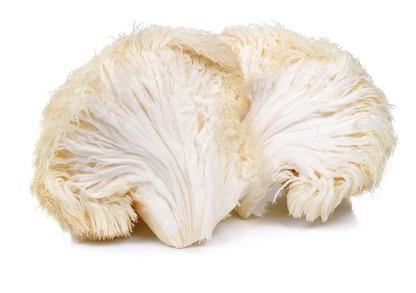
Shiitakes are similar in that they are widely available in temperature-determined subtypes. Still, they are more challenging due to a two-phase transition from spawn running, moving through a self-encasing “browning” change before producing fruit. Lions mane and other hericium species are another good choice but can be less aggressive in colonising new substrate and have a longer running period. These factors can also lead to frustration as competitor spores of Trichoderma moulds have more opportunity to take hold and contaminate the spawn. If this does happen, chalk it up to a learning experience and feed the spawn to your living soil; it has already advanced on its regenerative journey and will eventually your green garden.
Beginner Tips
For the first time around, keep the investment as low as possible by using oyster mushroom spawn, inexpensive (or free) bulk media for expansion substrate, and plan to move the fullycolonised containers into an outdoor setting for autumn fruiting. It may require mental self-negotiation to let nature take its course after caring for the spawn indoors. But any volume of nutritious and wellness-supporting mushrooms produced with low-to-no maintenance is a windfall. Account for the path you will take from indoors to outdoors, and ensure the weight of each container will not exceed your ability to move them with as little disruption as possible. A rolling cart or flat dolly, buckets with handles, or smaller containers are all viable options.
The Perfect Environment
As a controlled environment grower, the parameters of temperature, humidity, and light intensity are nothing new. To switch into mycelium running mode, dial the lights to zero, monitor the ambient temperature, maintaining it in a generally ‘human comfortable’ range around 21°C (70°F), and set fans to regularly flush the space and prevent carbon-dioxide-heavy air from settling around the containers. Bags made for spawn running have directional and permeable filter patches to release excess gas; if using food-safe plastic containers, cover ventilation holes with either breathable medical tape or polyfill (the stuff teddy bear
BENEFICIAL FUNGI
Use this square footage and some of the basic equipment of your plant cultivation to amp up autumn with a batch of beneficial fungi
Lions mane
Shiitake

A season-extending low tunnel or a potting shed can make an ideal home for the matured mycelium to be protected from autumn rains while retaining a fungi-friendly high-humidity microclimate and the low light levels fruiting mushrooms prefer. Take harvest access to heart when making your containers; intending to expose the top or only one side to fresh air could be the way to go. Secondarily, you can advantage an autumn crop of greens by growing their starts on a shelf in the tent with your mycelium; plants love a bit of extra C02
If planning to stagger starts toward summer’s end for cool-weather tolerant vegetables (claytonia, mâche, cold-loving lettuces, and spinach are good choices) to transplant out as the beds reach harvest peak/end, use the off-gassing spawn to supplement the quality of air in this rotational nursery environment. Protect the running fungi from the light at this stage by using opaque containers or a curtain to divide the area. Running mycelium also produces heat, so monitor circulation and ventilation to keep everything within the desired range.
Maturing Mushrooms

Time the anticipated end of indoor spawn-running to coincide with the cool rains of fall. Based on your local climate and microclimate, intend to give your fungi up to two weeks to reset after the disruption of being moved. To judge maturity and readiness to fruit, look for signs of white mycelium pushing up against the filters or creating a ‘skin-like surface. Once relocated, it’s time to expose your ideal “fruiting sites” to fresh air by cutting holes in or tops off bags and removing tape or filters. See if you can find the sweet spot where the indoor ambient temperature you’ve maintained is about the same as daytime, with nights dropping by several degrees. This mimics the wild fruiting habit of the fungi, initiating a phase change that you can observe as clusters of little bumps (“pins”) form when allowed to get out and breathe.
These pins will grow into full, familiarlooking mushrooms with stems, caps, and gills or be stunted by a sudden shock of unexpected heat or dryness. Contact with the ground and protection from wind helps buffer against this setback. Check on your experiment frequently once pins appear because the speed at which fruiting bodies form can be surprising; a barely noticeable bump before breakfast could be a luscious addition to dinner that evening!
Harvesting Mushrooms
Harvest mushrooms when their caps have expanded, but the edges remain curled. Use a knife instead of tearing them by hand, taking care to include and remove the whole cluster at once – little ones that grew to the same maturity but not as big will not benefit from being left to wither and hinder re-growing.
As in nature, a single fungal entity may have enough food and energy in reserve to fruit more than once while conditions are favourable – for oysters, it is common to garner minimally two to three ‘flushes’ from the same batch. Ten days to two weeks between maturity peaks can be expected; regular observation of your mushroom microclimate will allow you to catch them at their absolute best.
Failure Isn’t An Option
Overwinter your fungi with a warm blanket of straw or add it directly into compost or living soil. The more you work with mushrooms as a cultivator, the more your style and relationship to the species will emerge. Keep it fun, document your experiences, and be open to discovery; you can never fail with this mindset! 3
Xavi Kief is a writer, researcher, and lifelong learner with their hands in the dirt and their imagination traversing the universe. Seeking always to deepen and integrate their connection with the living planet and its diverse inhabitants, Xavi finds joy by infusing their practical and playful approach to cultivation with a healthy dose of science.They grow food and medicine for their family and community on their NorthEast Coast homestead.
7171
set fans to regularly flush the space and prevent carbondioxide-heavy air from settling around the containers
BENEFICIAL FUNGI
Oyster mushrooms are the most ubiquitous and beginner-friendly
4 SIZES AVAILABLE
11 SIZES AVAILABLE
4 SIZES AVAILABLE









FROM THE MAKERS OF CARBON FILTERS + HYPERFANS
EXCLUSIVELY DISTRIBUTED BY
DIGITAL TWIN FAN CONTROLLER IN EVERY BOX!
DIGITAL TWIN FAN CONTROLLER IN EVERY BOX!
Fabric pots
THICKBLACK
LIGHT GREY AVAILABLESIZES



ELIMINATES over watering aerate the root zone


Improve root structure and mass
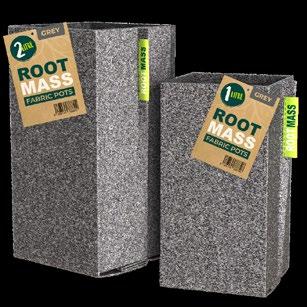
flexible and reuseable
BIGGER ROOTS, BETTER FRUITS eliminate root circling
Exclusively Distributed By creationwholesale
BY CATHERINE SHERRIFFS
Summer Social UK
Summer Social UK
A Sneak Peak Inside Plantasia’s Greenhouses
A Sneak Peak Inside Plantasia’s Greenhouses
They say gardening is one of the best stress relievers, but that seems to be the opposite experience for Benjamin Biggs, head of Plantasia UK. Of course, he and his four-person team are planning their greenhouses for the upcoming Summer Social (Aug 5-6), the exclusive tradeshow and networking event for the UK grow shop industry. It involves months of hard work, and while very rewarding, Ben admits it can be a tad stressful.
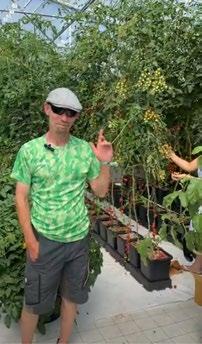
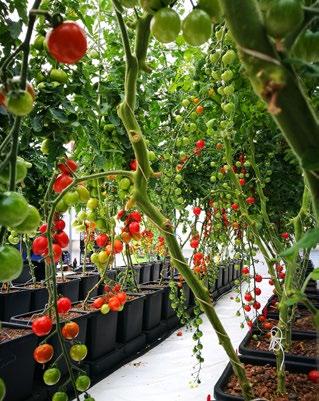
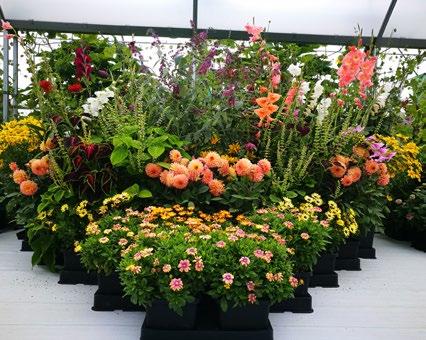
“One of my recurring nightmares is opening the greenhouse doors at the event and there being nothing in the greenhouse,” he laughs.
I’m no psychologist, but the bad dream makes sense considering how much time and effort goes into creating this incredible event. It might even become my new recurring nightmare! But, of course, the spine-chilling scenario has never become a reality; Ben and his team won’t let it happen.
An Ongoing Process
They start planning, ordering and sowing seeds at the end of January, a process that goes on until mid-May, depending on the

type of plant being grown. The seedlings go into Plantasia’s indoor propagation room, which has plenty of space for cell trays and pots of various sizes.
“We can temperature control that environment nicely, and we have some LED lighting in there that we use as well,” Ben explains. “We try to keep [the plants] in there as long as possible because it’s energy efficient.”
The seedlings go through one or two potting-up stages until they reach their final homes in the greenhouses in the spring. Then, the Plantasia team begins connecting irrigation systems, setting up plant supports, and creating the design work for the greenhouse layout.

74
PHOTO’S: MARTYNA KROL
Benjamin Biggs
This preparation happens simultaneously with the everyday work at the shop and maintaining the grounds for the Summer Social.
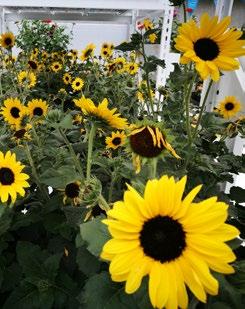
“It’s a continual process until the event,” Ben says.
Wow Factor
The greenhouse itself is nothing short of spectacular. The structure comprises 1,000 square metres (10,000 sq. ft) of growing space and six connected polytunnel spans. Each span is typically divided into four plots about 8x3 metres, which various companies in the UK horticultural scene sponsor to showcase growing equipment and products.

“We’re always talking with sponsors and planning how the plots will look, trying to formulate ideas, get inspiration from them and develop that into something workable and achievable,” Ben says.
The Greenhouse Sponsors
•
•
•
•
•
•
•
•
Coming up with something different every year can be tricky. For example, the event has previously explored a movie theme, including greenhouse zones dedicated to the Little Shop Of Horrors and the Land Of The Giants. Plantasia wants every year’s greenhouse theme to be fun and exciting; the 2023 show explores the world of fresh produce and crop diversity. Plantasia is known for growing many kinds of chillies, but variety is the true spice of life, so it’s branching out and featuring all kinds of food crops this year, like tomatoes and aubergines. This isn’t amateur hour; you won’t find the standard purple aubergine sold at the supermarket. Ben says event-goers can expect to see the fruit in shapes, colours, and sizes they’ve likely never seen before.
“We [also] have a world of tomatoes section,” he adds. “It’s about 275 square metres. It will probably be around 70-80 varieties of tomatoes, equating to 400-500 plants.”
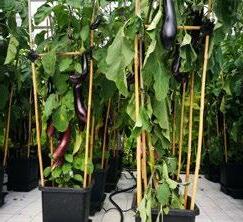
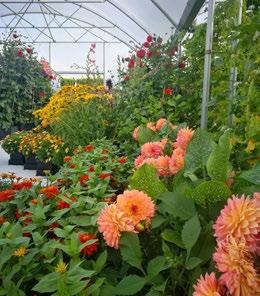
Who knew there were so many kinds of tomatoes? As for what else is growing in the greenhouses, Mum’s the word! But expect to discover a diverse range of crops you never knew existed.
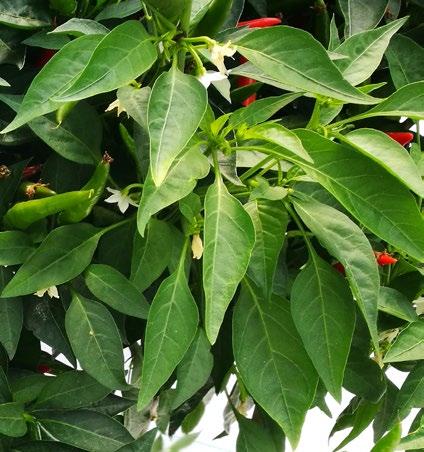
The Countdown Is On
From now until the event kick-off, Ben and his team will work diligently in the greenhouse, constantly watching the weather to ensure the plants continue to thrive. While the tunnels feature side openings and thermostatically controlled roof vents, there is no environmental control. The Plantasia team works with nature and the seasons; the plants sit on heated benches and are covered with horticultural fleece when nighttime temperatures dip, which can happen even throughout early June.
Is Ben’s recurring nightmare of an empty greenhouse starting to resonate?
“It’s a white-knuckle ride, sometimes, without knowing how things will turn out,” he explains.
Indeed, planning, designing, and hosting a massive industry event like this one while growing with the ever-changing weather can lead to white knuckles. But ultimately, Plantasia loves plants and wants to share its passion for growing with others. Giving people a space to network and learn about new crop varieties, equipment, and garden products is what it’s all about.
“There’s always a buzz when you see other people enjoying your work and seeing the benefits,” Ben says. “You get the rewards at the end with a great sense of achievement and pride in the staff for pulling this off. It’s a team effort.”
The countdown is on. 3
Figure 1
75 SUMMER SOCIAL 2023 75
the 2023 Summer Social:
At
Mills Nutrients
VegBloom (from Hydroponic Research)
Canna
Atami
Terra Aquatica (T.A)
Optic Foliar
Biobizz
Highlight Horticulture Did you know? Did you know? The Summer Social typically attracts about 800 visitors from the industry throughout the weekend! Check out summersocial.uk for more information and event updates.
Hearing The Music Of The Forest Giants
Part two
In this three-part series, Cosmic Knot writes about his journey making music with plants and some of the world’s largest trees. At the end of his first article, he had just met David Milarch of the Archangel Ancient Tree Archive; that meeting is about to send him to the top of a 240-foot Sequoia in California. If you missed part one of this incredible series, you can check it out in the Growth Cycles Issue at GCMag.co
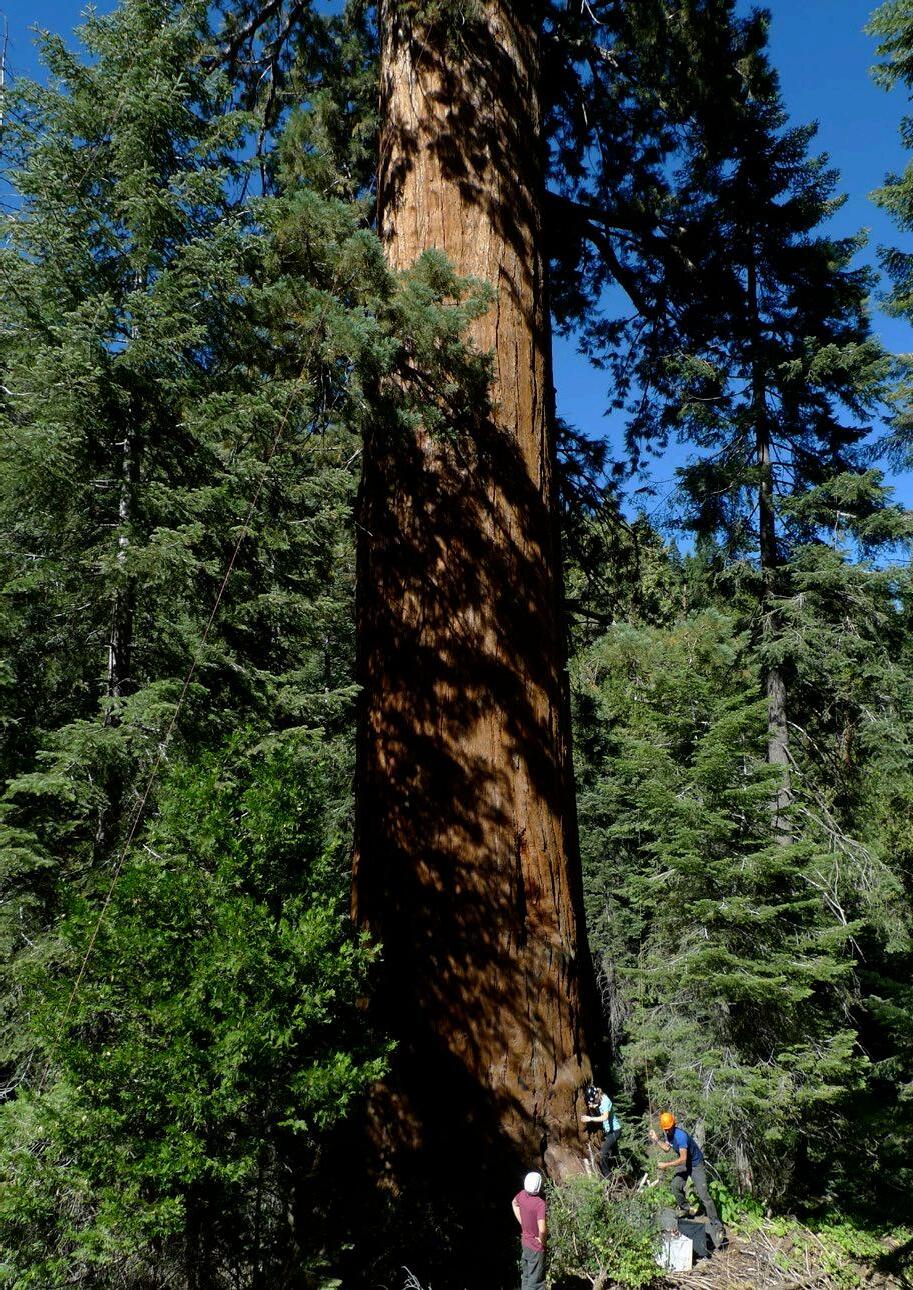
76
BY COSMIC KNOT
After playing music with the trees, I began talking with the founder of the Archangel Ancient Tree Archive, David Milarch. David is a no-filter, matter-of-fact guy with a reputation for taking things to a different level. I find that people who have been through experiences like his (near-death) tend to be more urgent in their approach to life. The idea of tree music was no exception, and he wanted to contact the world press and go to the west coast to experiment with other projects. He told me we needed to take this further and show the world what was happening.
The conversation covered various ideas, and I was left wondering what the future might hold, considering I originally only went there to shoot a video for the plant music festival in France. Unfortunately, the festival was postponed for a year due to the global pandemic, but it was the inspiration for contacting the archive, and again, life was not going to be the same for me.
A New Adventure
I had only known Dave and the crew for a few months when I got an email from the archive. They had 250 young trees they wanted to plant in California because a wildfire had nearly wiped out all the oldgrowth sequoias at Sequoia Crest. It was going to be part of a CNN - Call To Earth event. They wanted me to come to California to help with the effort and play music with a giant sequoia.
My first task was to modify the plant music device and extend the electrodes to 250 feet. Once I figured out how to wire it correctly, I tested it out at home on a smaller tree, and it worked! I knew it could go that distance with the electrodes, but would it work on such a giant tree? There was only one way to find out.
My girlfriend and I packed up and headed west towards Sequoia Crest, CA, behind a truck full of sequoias and redwoods. We found our way out of Michigan, across the mighty Mississippi and through the flat lands that lead west towards the Rocky Mountains.
In late October, snow covers the ground the farther you go on those mountains. You can see for miles when you’re up there, and there wasn’t anyone around us. It was dark, but the full moon shone down on the snow-lit peaks, revealing everything as if it were daytime. We peaked just over 11,000 feet and eventually started rolling through the beautiful scenery of Utah, the vastness of Arizona, and then Nevada.
We stayed the night just past the California border. The following day, we made our way towards our destination in the Sierra Mountains. The trek up the mountain to Sequoia Crest
is interesting because it starts with a climate that isn’t far off from an old western movie and eventually takes you to a place that seems like a Willy Wonka of Nature with massive trees that defy description.
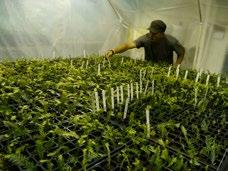
The road up the mountain to Sequoia Crest is a twisting and turning adventure with no guard rails and little room for error. The higher we climbed, the more forestry trucks we saw cleaning up the devastation caused by the recent fires. It looked like we had entered a war zone just before approaching our destination. The fire had badly scorched the trees, covering the ground with inches of ash.
Getting Ready To Climb
The first sign of a giant tree came in the form of a humungous stump that could hold a dozen children inside the hole burned out of its centre. At the camp, massive trees on either side of the road made the Penske box truck look like a toy.
I was in awe of the trees next to our cabin; it was like being in another world. We spent two days getting used to the area while exploring the remains of some of the largest trees on earth. Once the climbing crews arrived, they set to work securing the tree we were going to climb so I could hook up and play music. The tree is a giant with three main trunks extending over 200 feet into the sky. Because of its three trunks, it was named the Three Sisters tree and survived past fires, including the 2021 Castle Fire.

7777 MUSIC OF THE FOREST GIANTS
They had 250 young trees they wanted to plant in California because a wildfire had nearly wiped out all the old-growth sequoias at Sequoia Crest
GREAT FLOWER COMES FROM POWDER

CRAFT POWDER BASE NUTRIENTS & ADITIVES




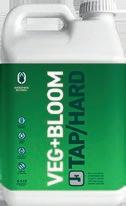

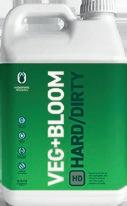






Distributed in the UK by
When we were ready to climb, I stood at the bottom of the massive giant, looking up. I couldn’t even see the top. I was nervous as I put my harness on, but I secured the 250-foot wire for my electrode to my climbing belt and started up the tree.
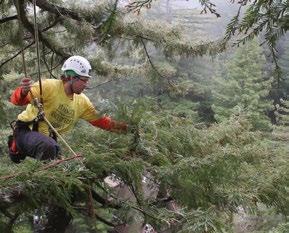

The aim was to get to the nearest live leaf and hook up my electrode. So I started pulling myself up the tree as a reporter for the A.P. World News made his way down on the other end. The rope was set up in a teeter-totter-like fashion, with his weight helping propel me higher than I would’ve been able to climb on my own.
Bird’s Eye View
Once I got to 50 feet, I looked down, and the reality of the event hit me. We were already 7,000 feet up on the edge of a mountain cliff overlooking the central valley of California, and I was climbing 20 stories into a giant tree for music. At 75 feet, I started feeling more comfortable, but my arms were so weak from pulling myself up that I could barely hang on and enjoy it. After about 100 feet, I approached where the first massive limbs branched out from the main trunk. I was still nowhere near reaching a live leaf. Even at that height, the fires scorched much of the tree trunk.
I climbed through more massive branches, moving toward the head climber perched near a living leaf. Once I was at 150 feet, the clouds rolled in on the mountain underneath me, and I couldn’t see the ground anymore.
At just over 200 feet, I finally reached a place where I could get to a live leaf. I was exhausted by the physical strain and pushing my adrenaline to the max. I could barely move my hands and arms. I wrestled the electrode free from my belt, and the head climber attached it to the tree.
Holding that phone out after climbing 200 feet is a challenge, but it’s nothing like playing the guitar while hanging from the giant
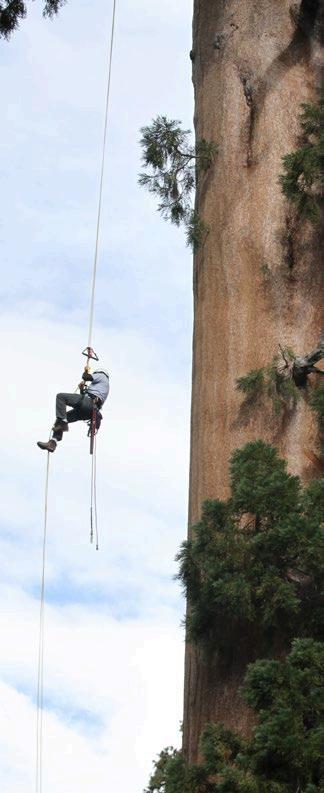
I had just enough hand strength to take out my phone and film him attaching the electrode. Holding that phone out after climbing 200 feet is a challenge, but it’s nothing like playing the guitar while hanging from the giant. I experienced a feeling I’ll never forget when I finally made my way back to the ground. I was so grateful to be back on earth. I’ve been out to sea numerous times where I had motion sickness and longed for solid land, but this was entirely different.
What will come of Cosmic Knot’s jam session with a 240-foot sequoia? He shares the results and his experience’s profound impact in the final installment of this series in our next edition. Stay tuned! 3
7979 79
BIO Tom Wall: Professional Musician, Writer and Gardening Consultant. Cosmic Knot/Therapeutic Horticulture Consultations. Growing up on a deer farm located on 79 acres of land along the banks of one of Lake Michigan’s tributaries, Tom grew a love for nature and all the beauties it could hold. Through that passion, Tom has channeled his influences into educating the community on sustainable agriculture, becoming an activist, writing for magazines and creating music tuned to nature in his band, Cosmic Knot.
Once I was at 150 feet, the clouds rolled in on the mountain underneath me, and I couldn’t see the ground anymore
BY JOANNA BERG
Getting In Tune
Keys to Succeed at Integrated Pest Management
Getting In Tune Keys to Succeed at Integrated Pest Management
Integrated Pest Management (IPM) takes an ecosystem approach to pest/disease management. It focuses on the longterm prevention of pests and diseases with multiple types of practices to reduce reliance on pesticides. Pesticides are always the last line of defence in the philosophy of IPM, not the first because building resistance to pesticides is not a matter of “if” but “when” and how fast. Also, IPM accepts pests/diseases as part of the natural system.
Creating Balance
Having any pest or pathogen in our garden can make us uncomfortable. We want to eradicate all threats and sterilise pests and diseases from our cultivation spaces. Still, a balance of pest/disease presence versus the tipping point of unacceptable proliferation and damage is a crucial threshold for cultivators to understand and embrace. Without some pest presence, you will not have the prey-specific beneficial predators and parasites you want in your garden to assist in controlling that pest. In a sterile environment, a plant may not trigger the biological and chemical responses needed for a heartier, healthier, and higher-quality crop.
Know Your Environment
Get to know the environment that surrounds your cultivation space. Teach yourself about your area’s various pest and disease risks, the native soil type, how the water moves above and below ground through your location, the parameters of your climate and weather, and the surrounding vegetation, organisms, and habitats. Do you know the name of the watershed you are cultivating in?

Find out! Whether it’s acres or a backyard, urban or rural, or even if you are growing indoors, knowing the environment and what it may bring to your garden will inform your IPM choices and build a more conscious value for the resources in your region that make it a success.
IPM Strategies
All IPM strategies and practices are based on the type of pest and disease risk experienced in your cultivation ecosystem and
what your crop needs to thrive. Therefore, all cultivators must develop a foundational knowledge of the pest and disease risks posed by their environment and plants, as well as an understanding of your crop’s nutritional and biological needs. Traditionally, IPM practices are defined into four categories to help growers select effective techniques they can appropriately implement in their growing spaces. The four IPM categories are cultural management, mechanical management, biological management, and chemical management.
Cultural Management
Cultural management includes practices focused on keeping plants healthy and stress-free. The most important cultural practices you can implement are selecting plants with healthy genetics well adapted to your site conditions, proper soil nutrient management, and routine stress, pest, and disease monitoring. Other cultural practices may include crop rotation, interplanting, trap crops, weed control practices, and the proper timing for planting and pruning. The bottom line is prevention; being proactive rather than reactive is vital.
Mechanical Management
Physical and mechanical methods include fences, screens, barriers, or traps. Good hygiene is also essential, like cleaning tools between plants and working from the healthiest to the sickest plant. Physical responses like pruning, debris removal, handpicking or knocking pests off plants are also involved. These methods work well for a smaller garden or high-value crop, but they often
80
Get to know the environment that surrounds your cultivation space
IPM accepts pests/diseases as part of the natural system
require a lot of time, and depending on the size of your operation, it may not be easy. Everything is always a balance, and developing that action threshold is a nuance that is important to embrace. Large-scale producers do this with economics and cost-benefit analysis so that the action threshold becomes very black and white to their production. Smaller-scale or hobby growers may have a more intuitive approach to this threshold. Still, we should always develop some key tipping point clues for action, like noticing pest populations increasing quickly or the pest spreading from one plant type to another.
Biological Management
Biological management uses predators, parasites, or disease organisms to control pests. When monitoring, note beneficial insect predators and parasites that you are seeing. Including plants in your cultivating environment that attract and harbour beneficial insect predators is another tactic of biological management. Having beneficial species that naturally populate themselves is ideal. These can be acquired at a garden store if your natural populations need a boost or a specific predator or parasite. Predators are pest-specific, so proper pest identification is critical. Disease organisms are pathogens that target the pest you are treating. They are often bacteria-based and target a specific pest, so correct identification is needed.
Chemical Management
Chemical management is the last resort; the treatments you apply after deciding that all other management routes have been exhausted, the damage is too severe, or the risk of loss is too
great. Insecticides and fungicides are used to control these acute pest and disease situations. Using these practices sparingly is ideal because pests will build resistance to the product causing populations to recover and become even more problematic. Another drawback to chemical management is that many of these products will kill beneficial insects and the pest, effectively destroying the balance and biodiversity you have worked so hard to maintain.
Five Tips to Succeeding at IPM
So how do you do IPM? Some very basic steps can be taken away from the concepts just discussed.
1. Monitor routinely - correctly identify pests and beneficial insects, learn biology and lifecycle, and keep logs.
2. Set action thresholds, so you know when you are reaching that tipping point of pest presence to pest nuisance.
3. Learn and implement prevention for your site-specific garden.

4. Evaluate results. What happened? Did it work? And (again) keep notes!
5. Observe, consider, and then decide.
That last tip is probably the most important. So often, I see smart and experienced cultivators get in their heads about how to manage a situation. They project an internalised idea or bias onto their crop, and these strategies often fail. When assessing a management issue, give space for observation and consideration before making decisions. The land, the plants, the insects, and the animals will show you how to operate in their world more effectively rather than asserting our ideas upon them. 3
8181 INTEGRATED PEST MANAGEMENT
Joanna Berg is a Certified Professional Soil Scientist specialising in pest and disease diagnosis and integrated crop management solutions through her firm in Northern California, Dirty Business Soil, LLC.
 BY AV SINGH
BY AV SINGH
The Squid Game
How A Waste By-Product Becomes A Regenerative Agricultural Solution
Calamari for cucumbers? Well, not exactly, but food waste streams are a common origin for many fertilisers and biostimulants used in the agricultural sector. The North American appetite for shrimp has created an opportunity to treat the waste using a combination of low heat, natural enzymes and strong acids to degrade and stabilise proteins as amino acids and minerals. Often marketed as balanced organic soluble nutrients (e.g., an N-P-K analysis of 2-2-2), liquid shrimp hydrolysates are gaining traction in agricultural and horticultural markets over traditional fish hydrolysates because of an additional biostimulant factor.
Biostimulants are one of the most innovative alternatives for those who want to improve the yield, quality, and post-harvest shelf-life of agricultural and medicinal plants. They are not fertilisers, as they do not provide nutrients directly to plants, but they can facilitate the acquisition of nutrients by supporting metabolic processes in soil and plants. Biostimulants also help plants to thrive, even under stressful environmental conditions, by improving water and nutrient uptake and protecting them against pathogens. Biostimulants can be grouped based on their origin; for example, humic substances (humic acids, fulvic acids, and humins), seaweed extracts, protein hydrolysates (e.g., soy, fish, and shrimp), beneficial microorganisms (bacteria and fungi), chitosan/chitin, silicon, and extracts from food waste or industrial waste streams.
Whether using an animal (fish or shrimp) or plant-based (soy) hydrolysate, the primary bio-stimulatory factor arises because the nitrogen is often in the amino acid form, which serves two unique functions. First, amino acids are the building blocks of proteins, so the uptake of whole amino acids gives plants a shortcut towards protein synthesis.
Perhaps equally important is the L-cysteine amino acid opens up calcium channels in plant roots, allowing for a significant increase of calcium by the plant. But, what makes shrimp hydrolysate different from that of soy and fish is the addition of chitin (the deacetylated biopolymer form of chitin is chitosan) to the mix.

Plants under stress, like humans, experience inflammation in the form of reactive oxygen species (colloquially referred to as oxygen-free radicals). These molecules play a dual role in plants as either beneficial signalling molecules or damaging molecules when in high concentrations caused by extreme stress. For example, Chitin/chitosan represents a stress-elicitor that, if used in small amounts, may generate improved crop health by signalling the natural antioxidant defence systems within the plant. The heightened immune system of the plant is, therefore, better able to respond
to fungal pathogens or abiotic stresses like drought, salinity, or high temperatures, which can make the plant more susceptible to insects and disease.
A waste by-product from the production of calamari is not only a regenerative agricultural tool to reduce fertiliser applications but also serves as a plant immune system booster, reducing the need for fungicides and pesticides. But, perhaps most importantly, the biostimulant nature of squid hydrolysate is that it can elicit the production of many of the secondary metabolites we seek from our food and medicine, like flavonoids and terpenoids. 3

THE SQUID GAME
Food waste streams are a common origin for many fertilisers and biostimulants used in the agricultural sector
8383
Bio
Av Singh, PhD, PAg is an advocate of regenerative organic agriculture serving various organisations including Regeneration Canada, Navdanya, and the Canadian Organic Growers.
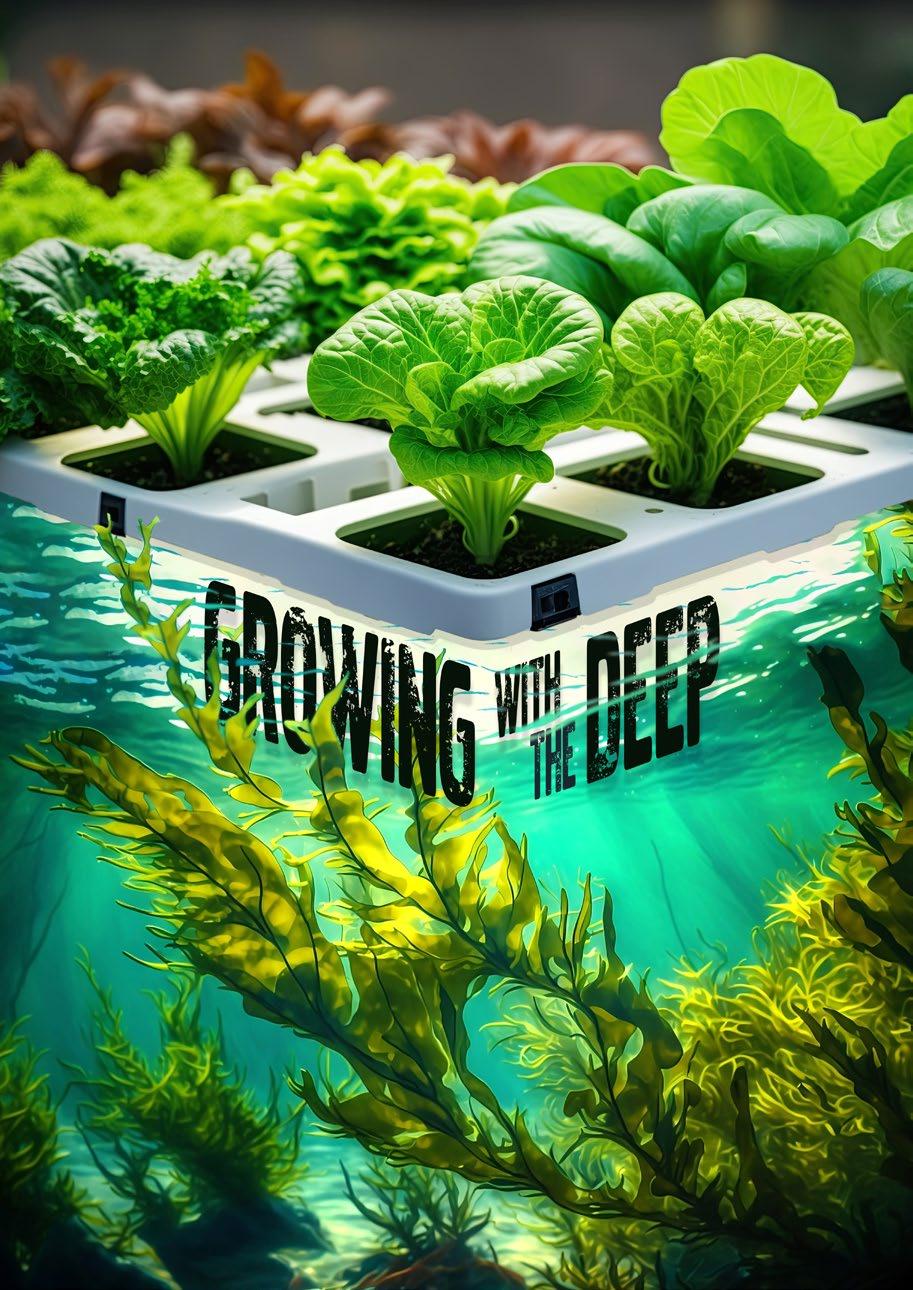
BY XAVI KIEF 84
Turning Your Thumb from Green to Aquamarine
The choice to use any gardening input, whether homebrew or commercial, is guided by economic, ethical, and other practical considerations. If you can take a hands-on approach to building and regenerating the soil beneath your feet, locally available marine-sourced amendments are often free, highly valuable, and allow you to avoid participating in animal industry waste streams.
The “Why’s” of using seaweed to grow healthier plants have been thoroughly demonstrated [for a quick review, see Garden Culture Issue 48 ‘An Octopus’ Garden Companion’]. Phytochemicals in sea plants raise the quality and improve success rates throughout a single seed’s journey from germination through growth, propagation, harvest, decomposition, and reintegration as new life. Its benefits in a regenerative food and medicine production plan are felt over multiple seasons, boosting climate resiliency in the living soil for future generations.
Theory into Practice
Collecting seaweed from the beach can be one of the easiest and most economical opportunities to incorporate the vitality of ocean ecosystems into your soil health strategy. Like any wildcrafting endeavour, aim for a joyful and harmonious experience; here are some practical considerations before you begin.
Tidal Truths
It is a matter of respect and personal accountability to educate yourself on the history and ecology of the shores from which you intend to gather. The presence of sensitive species, unique habitats, culturally significant sites, and local regulations should be factors in your decision. You may even discover hidden day trip gems!
In locating a good spot to visit, keep in mind sea vegetables are bioaccumulators of heavy metals; this is great if you’re looking to remediate waters impacted by toxic industries, but not so good if you end up bringing home material which has been exposed to arsenic, cadmium, lead, or mercury before incorporation in the earth where food and medicine crops are rooted. Although the most obvious source of pollution might be commercial enterprises like mining, smelting, ceramics or glass manufacturing, and high rates of vehicular traffic, consider agricultural runoff and surrounding geophysical characteristics (coastal erosion, volcanic activity) as other possible contributors of undesired elements.
However, by bringing high-quality scavenged seaweed home, you can add desirable trace minerals that are less abundant, depleted, or absent in your soil.
To retain balance, offer something in gratitude for the benefits you will experience from the seaweed. One pragmatic action is to collect and remove any non-natural debris (e.g. trash) you find during your treasure hunt. A bucket or puncture-proof container is a good choice, as broken glass, rusty metal, and plastics are especially dangerous. Make sure you protect yourself by using a glove or scoop. If you regularly return to a particular site under management, a gesture of goodwill toward the people who maintain the safety and accessibility of stairs, parking areas, paths, piers, or other features might be in order.
Take the opportunity to observe and note which types of seaweeds are deposited on your selected shores. Structurally and phytochemically, the varieties local to you are built for your climate – water temperatures, depths, underwater topology, and other environmental factors produce conditions for certain types to thrive nearby. A major weather event may deliver new and interesting plants for you to gather and use in cultivation, and if fresh and to taste, perhaps even in the kitchen!
How Much to Mulch?
When a valuable resource appears in abundance, such as when long piles of washed-up vegetation are left on a beach after a storm or high tide, it helps to have a comprehensive processing and use plan already in place.
The first and simplest tactic for using seaweed in your garden is to directly mulch raised beds, no-till plots, and planters. Dry seaweed can be a very dark colour and have a heat-retaining quality at the rootzone – decide whether your plants will enjoy or suffer from this additional solar power and apply it accordingly. Small pieces will be easier to work with and break down faster, but entire fronds can be wound around the base of larger plants or laid out in strips more quickly. A powered push mower, a very sharp manual mower, or a brush cutter can be deployed to shred the seaweed, but beware, this task is abusive on the mechanisms, and you’ll need sharp blades to handle the rubbery, possibly slick substance. There may also be shells, rocks, and sand with which to contend. On a small scale, you can hold it in one hand and cut short strips (about 3 inches, similar in size to woodchip mulch) with sturdy shears. Wear appropriate gloves with a good grip if done by hand to prevent cuts and repetitive strain injuries.
85
If you can take a hands-on approach to building and regenerating the soil beneath your feet, locally available marine-sourced amendments are often free, highly valuable, and allow you to avoid participating in animal industry waste streams
85 GROWING WITH THE DEEP

Some folks can be sensitive to the oceanic perfume of sea plants decomposing on the soil surface; if you’re concerned about this, stick to more traditional composting methods. If you already work with funky fermented fertilisers in the form of teas, dunk a net bag of collected seaweed into a non-leaching plastic or glass container and brew into a highly concentrated drench and foliar spray. Apply these at high dilution rates (30:1 fresh water to extract or higher) at regular intervals throughout the cultivation cycle.
If you have more than you need for mulch, seaweed contributes to compost, holding moisture and lending dynamic structure to the rich organic materials under digestion by beneficial bacteria and fungi. Depending on your composting style and volume, add this material like you would any other ‘green,’ minding that if left whole, you may find it tangles up turning forks and increases labour.
The Beachcombing Cultivator
Ambition can get the better of us sometimes, and it is tempting to go big when gathering marine plants for the garden. Remember that you will be carrying everything you collect back to your vehicle or, if you’re especially blessed to have direct access from your cultivation area to the marine environment, the garden itself. Start at the farthest distance, making your way back, and remember that the freshest, juiciest plant matter will also be the heaviest with water. Sun-dried seaweed is perfectly suitable for garden use.
Net bags (perhaps thriftily repurposed from a bulk onion purchase) allow excess sand and water to be shaken from the seaweed before you lug it home. There should be no need to cut the plants; follow the rule “if it’s alive, leave it to thrive” and let rock-clutching specimens retain their place in the ecosystem. Be prepared to cut and remove tangled garbage from your seaweed before it goes into your collection bag, and depending on the type you find, break down large pieces and allow them to drain as you traverse the shore.
Assemble a kit to maximise the ease and pleasure of gathering oceanic inputs when the opportunity strikes. A day at the beach could have long-term positive consequences for the resilience, richness, and yield quality of your garden!

• 5-gallon bucket with lid and good carrying handle

• Net collection bag(s)
• Tarp to line your trunk or truck bed: if collecting large amounts, consider bringing a tote or stackable bins.
• Safety gloves: fishing gloves are made to resist cuts and punctures, resist degradation by salt exposure, and grip slippery stuff; they are ideally suited to working this task.
• Sharp knife or garden shears.
• Freshwater to rinse, a rag to dry, and plant-based oil to lubricate your tools after use.
• Jugs or Jars for water collection
Bonus Points:
Seawater as a Natural Farming Amendment
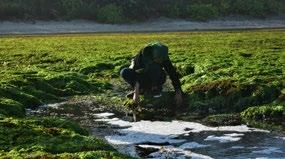
If you know a spot where a tidal river meets the sea, this brackish liquid can be deployed in your grow. You might add fresh water to the seawater that drains from your collected plants if you bring them back in a tote. Traditional wisdom and modern research have demonstrated that irrigation with a 10% seawater dilution can increase sweetness in crops like grapes.
Korean natural farming methods also point to using a 30:1 seawater dilution mixed with rice and mugwort (or other herbal) extractions and allowed to ferment in the open air for up to three days. Wild yeasts and other beneficial microorganisms will populate the batch and make it cloudy, indicating readiness; this should be used immediately as a foliar spray on vegetative plants to combat fungal diseases.
Taking marine-sourced input excursions as a regular part of your cultivation cycle is an opportunity to connect with an expanded ecology, tying you and the soil fertility under your stewardship (whether acres or square feet) to the greater forces of nature. 3
8787 87 GROWING WITH THE DEEP
A major weather event may deliver new and interesting plants for you to gather and use in cultivation, and if fresh and to taste, perhaps even in the kitchen!


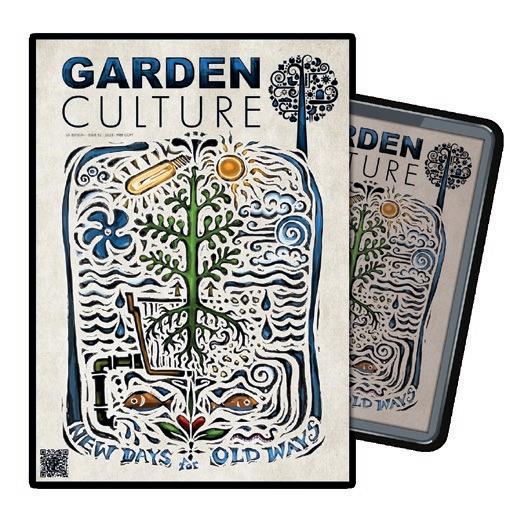

Visit GardenCultureMagazine.com and subscribe now! Don’t want to miss out? Grow your own – no matter where you live. Sustainable, efficient gardening. New hints and tips Follow Us GardenCulture GardenCulture Garden_Culture GardenCultureMagazine 10 years, and grow ingstro n g ! Don’t want to miss out?


















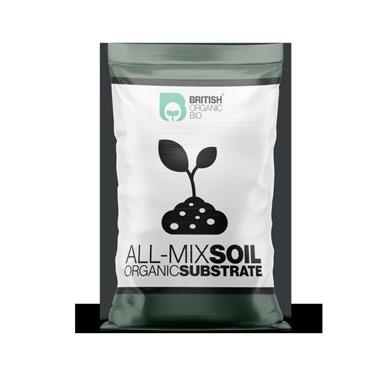


Local Growers
WHO’S GROWING WHAT WHERE
Aaron Greco
Meet Aaron Greco, who, despite a Greeksounding surname, has some Italian blood flowing in his veins. His gardening journey started at a young age when his grandad, a gardener with an allotment, sowed the ‘grower’ seed in him. Aaron remembers many happy memories of going down to the allotment and helping as much as possible, digging up potatoes and picking beans and tomatoes. But, as the years went on, he lost his love for gardening, and it wasn’t until the lockdown in 2020 that he decided to start again.
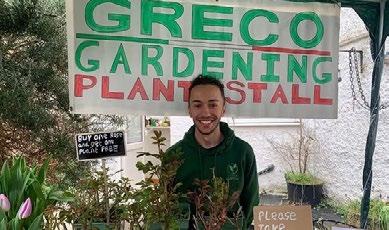
First, he built five raised beds out of old pallets to start growing vegetables for self-sufficiency. He wanted to create the beds at no cost, so sourcing pallets from strangers and collecting the soil for filling them was one of the first tasks to tackle.
Aaron studied photography at University and uses his creative mindset when gardening. His pair of raised planters from old car tires was featured on BBC Gardeners’ World, showcasing his unconventional approach. With that, the beginning of the new adventure started - growing as much fruit and veg as possible.
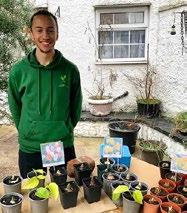
“It tastes so much better than shop-bought, and it just feels a lot more rewarding,” he says.
Nowadays, Aaron doesn’t just grow vegetable plants for himself but also for a monthly sale at a local village market. When you enjoy growing plants, why not share that love with the local community? Aaron says his most popular plant to grow and sell would be Roma Italian tomato. His passion for this variety comes primarily because of his Italian heritage. Plus, people adore the taste of homegrown tomatoes. If you’ve not tried this variety yet, it’s one of the best for sauces and canning due to its dense flesh and few watery seeds.
Nottingham, UK
the UK & Ireland


To keep his skills sharp, muscles engaged, and on top of botanical knowledge, when he’s not selling or growing plants, he’s out and about, helping maintain other people’s gardens. Many people would say gardening is great for their mental health, and Aaron agrees. Getting your hands dirty in the soil boosts your serotonin levels, making you happier. In addition, healthy soil contains good old protozoa, single-cell organisms with excellent anti-inflammatory properties, keeping our minds and bodies in good shape.
Beyond a healthy lifestyle, Aaron’s gardening journey has inspired passion and an open mind for learning new tips and tricks.

Learn more:
instagram.com/plantedbyaaron youtube.com/@AaronDoesIt
91 GARDENCULTUREMAGAZINE.COM in
BY MARTYNA KROL









@thesourcefertiliser root stimulator grow stimulator flower stimulator PK stimulator boost stimulator CalMag stimulator plus sourcefertiliser.com Now available in 250ml, 1L, and 5L Go to the source, for plant nutrition in its purest form. It’s a simple concept. Clean, highly concentrated fertilisers for effective, efficient performance. s urce the made in the U.K. Works in harmony with AutoPot Watering Systems and all other cultivation methods.
Local Growers
WHO’S GROWING WHAT WHERE
Rose Bunn
Rose’s growing story is somewhat of a domino effect. It started innocently four years ago when she sowed wildflowers in a few tubs in a little suburban garden with her daughter, Luna. They loved seeing the flowers bloom and the wildlife it attracted. The flower tub collection grew a little more, with helpful guidance from Rose’s Mum, starting from hardy bedding plants like geraniums and begonias. The Mum here is of significant value, as Rose reminisces her upbringing in a nearby village with a good size garden and lovingly nurtured cottage borders and hanging baskets. The love for nature and animals sparked then led to feelings of relaxation and freedom.
A few decades later, the gardening bug again took hold of Rose. She began by building a couple of flower beds at the front of the house and filling them with perennials such as Lavender Echinacea and Scabious. Shortly after that, a few more flowers went into the back garden, followed by a trial of strawberries and tomatoes and the most recent addition of a zip greenhouse. Unfortunately, the structure was not quite ready for the strong spring winds, so after a short seedling mourning period, Rose started the sowing game again. This year, it’s time for some miniature Halloween pumpkins.
After having some challenges with ‘pests’ on several plants, she learned about natural pest control, such as ladybird larvae, slugdeterring copper tape, and a soap spray for aphids, all far more beneficial than nasty pesticides. Not so long ago, much of this expert knowledge would not be accessible without a horticulture degree. But the current online community of gardeners sharing their top tips and tricks has made it possible to quickly learn and engage even when you have a busy life. This realm is a real asset to those starting their growing journey.
in the UK & Ireland

Would you like to be featured as one of our local growers? If you’ve got a garden, grow room, or farm and have a story to share, contact us at growers@gardenculturemagazine.com.

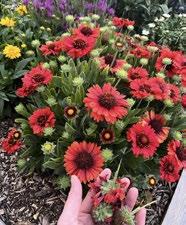
Scartho, Grimsby, Lincolnshire
Rose describes herself as an enthusiastic novice gardener, despite working full-time and raising a family. With a helpful hand from her husband, Colyn, her garden thrives. It’s a space for loved ones and wildlife to gather. Rose’s words sum up nicely the essence of a beginner, though I think this applies even to those with plenty of growing experience.
“I can’t explain how happy I feel when coming home and being greeted by my plant babies,” she says. “I can’t wait to see how my garden changes, the wildlife that hopefully comes to visit, and the continued joy and safe space it will give me”.

It’s all about joy, isn’t it? 3

Learn more: instagram.com/the_rose_garden1

93 WHAT’S GROWING ON GARDENCULTUREMAGAZINE.COM
WAYS
Homemade, Natural Solutions Help The Garden Thrive


Regenerative and organic gardening is about taking a page from Mother Nature when growing plants. Imitating what happens naturally in a forest or wildflower field can produce tremendous results in our home gardens. The best part? Making homemade sprays and solutions to enrich, treat, and maintain your plants is relatively easy and affordable. There are countless tips and tricks for regenerative and organic gardeners in this edition; let’s wrap things up with our list of 5 Cool Ways Homemade, Natural Solutions Help The Garden Thrive.
Boost Soil And Plant Health
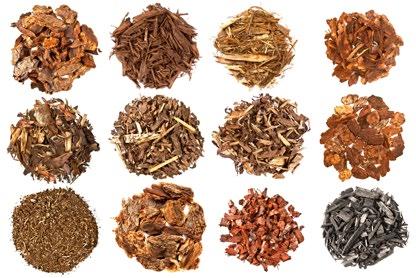
Mulching is a process not to be skipped in the regenerative and organic garden! This process warms the soil, enriches it with nutrients, and prevents erosion, water evaporation, and weeds from sprouting. One stone, so many birds! Compost is an excellent mulch that can easily be made using kitchen scraps and brown material from around the yard. Shredded leaves, wood chips, and seaweed are excellent forms of allnatural mulch, as are straw, grass clipping, pine needles, and cardboard. Living mulch, like a low-growing groundcover, works wonders and looks beautiful. And when a plant’s lifecycle ends, the chop-and-drop method of mulching involves cutting stems, leaves, and flowers back and allowing them to decompose naturally in the soil. Be sure the plant is pest and disease-free before attempting this at home.
All-Natural Fertiliser 2
Not for the faint of heart, making comfrey tea stinks something fierce, but it works miracles as a fertiliser for fruiting plants! This homemade brew uses all-natural materials, boosts plant growth, and encourages better flowering. Perennials and annual veggie crops love it, so grab some gloves and a clothespin for your nose. Once you find a bushy comfrey plant in the garden, chop half the volume to about 2” from the ground. Fill a bucket with the comfrey leaves, stems, and flowers, and add water to steep the plant material. After about two weeks, the tea will be ready; the darker and smellier the brew, the better! If you gag easily and know the stench will be too much to handle, you can simply add comfrey leaves to some mulch or compost, but the benefits won’t be as immediate. If you’re tough as nails like Garden Culture’s Martyna Krol, her article on making comfrey tea fertiliser is on our website.

1
Dampening Off and Powdery Mildew 3
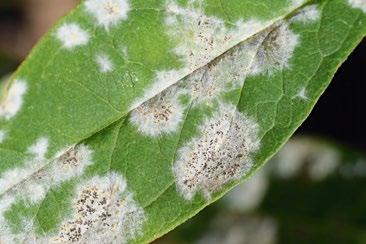
Dampening off strikes seedlings in humid environments like grow rooms and greenhouses, appearing as a fuzzy mouldy growth on stems and seeds. Luckily, there’s a homemade solution for this fungal disease! Chamomile tea is easy to make; combine 1 part fresh chamomile with 3 parts rainwater or dechlorinated water in a mason jar and place on a sunny windowsill for a day. Strain and use the mixture to water seedlings or put it into a spray bottle to mist the plants and soil daily.You can also use this tea as a foliar spray to prevent disease in mature plants. Of course, in the dog days of summer, no outdoor garden is spared from the clutches of powdery mildew.These ‘powder’ spots are typically found on cucumber and squash plants and spread rapidly. Prune and discard the affected leaves before applying a classic milk spray to the remainder of the plant to prevent further spread. Mix 1 part cow’s milk to 3 parts water and apply in direct sunlight. You can use it every few weeks as preventative medicine or every three to five days when disease strikes.
Pest Problems 4
When pests show themselves in the garden, many gardeners look to kill. Unfortunately, other beneficial bugs might fall victim to our eradication efforts. Before going to the extreme, try repelling pests instead. A repellant will mask the scent or change the taste of the plant, encouraging pests to look for food elsewhere. We all go home happy! Joe Lamp’l offers his favourite homemade insect repellent in The Vegetable Gardening Book: Your complete guide to growing an edible organic garden from seed to harvest. You’ll need your gloves for this spicy brew! He recommends blending 2 cups of water with 2 cups of hot peppers. Strain the solution through a cheesecloth and pour the liquid into a spray bottle. Don’t have peppers on hand? Replace them with 2 garlic cloves instead! Or, if the pest situation is out of control, use garlic and hot peppers. Lamp’l suggests adding dish soap to the solution to help it stick to the plants.
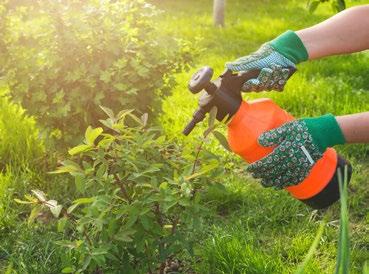
Supercharging Soil 5
We’re saving the most complicated homemade garden amendment for last. Biochar is garden gold! An ancient technology thousands of years old, the native people of the Amazon created charcoal, mixed it into their soil, and watched as the beautiful earth became more productive than ever. According to Mark Highland, author of Practical Organic Gardening: The No-Nonsense Guide to Growing Naturally, even 2,000 years later, crops can be grown in biochar-enriched soil with little to no additional fertiliser application. Biochar is made through pyrolysis, the process of burning organic materials without oxygen. The result is a highly-porous carbon that improves nutrient adsorption and offers a permanent home to soil biology. Believe it or not, you can make small amounts of this miracle soil enhancer at home using a top-lit updraft stove (TLUD); a quick online search will teach you everything you need to know. Highland says when using a TLUD, each batch makes about one to two cups of biochar ready to offer your plants more than a lifetime of benefits. 3
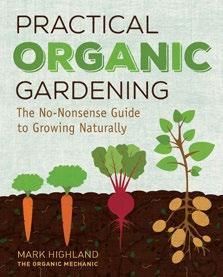
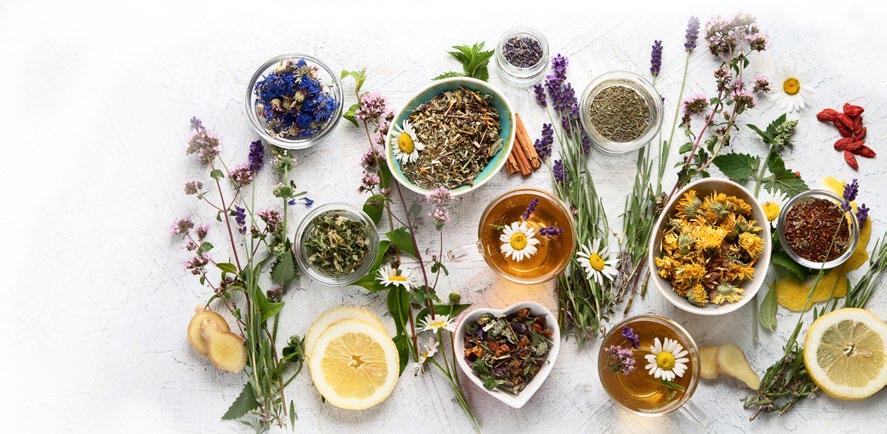
9595
ChamomileTea recipe courtesy of Garden Alchemy 80 Recipes and Concoctions for Organic Fertilizers, Plant Elixers, Potting Mixes, Pest Deterrents and More, by Stephanie Rose.
GREEN ADVICE
FAST. RESPONSIVE. BESPOKE.
WEB DESIGN

Designer A person who takes a problem and creates a solution.
Developer Takes a design solution and builds a web experience. Business Is what comes to those who sell an experience.


WWW.NPK.MEDIA @NPK_MEDIA
Pioneering References



mamapublishing.com













Multi-Packs Discover Advance Your Feeding Program For Professional Results. The Advanced Nutrients Multi-Packs are the perfect next step for home growers who are ready to fine-tune their feeding program or experienced growers looking for a low-risk way to test out our best-selling technology. From best-selling bloom boosters to our proprietary pH Perfect® Technology, our Multi-Packs make it easier than ever to explore the most sought-after features of the Advanced Nutrients line. Scan this QR code to find out more about our new multi-packs.

















































































































































Fab for a reason! www.plagron.com gro a n icnutrientsbrand 3202 1 revo a llnutrientsbrand 3202
IN A
At CANNA we love to spend our time conducting research and producing the best quality in everything that we do, whether it be our products, our plants or even our posts! The same applies to this advert. Scan the QR code and check out the Behind The Scenes footage of this advert creation.
















































































































































































































































































































 BY AV SINGH
BY AV SINGH








































































































































